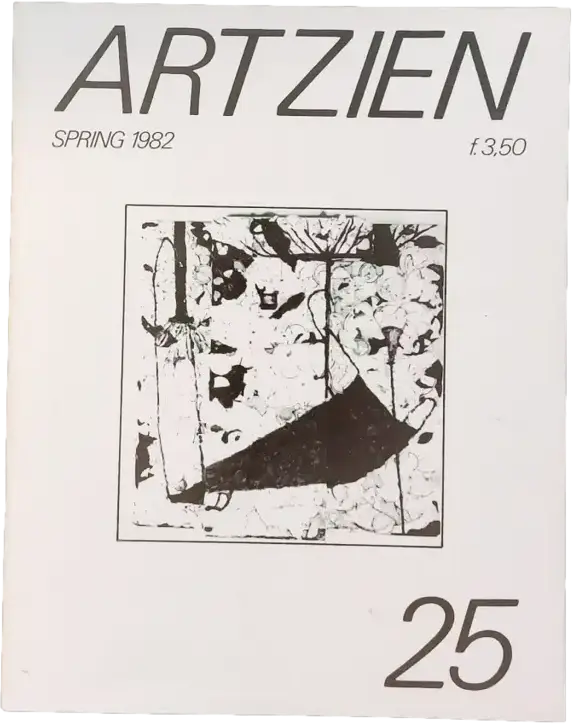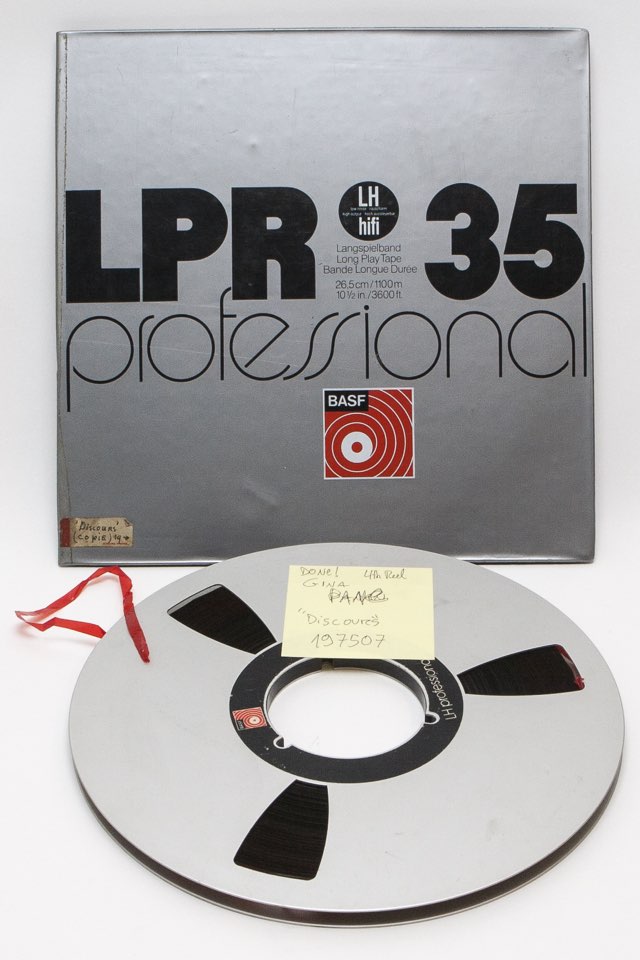Here is Ulay with
Stedelijk Museum, Amsterdam

Photo negatives for the documentation sheet of de Appel
Jürgen Klauke / Ulay
Keine Möglichkeit 2 Platzwunden
September 1975
Upon invitation from the Stedelijk Museum Amsterdam, in the framework of Ulay Was Here (21.11.2020 – 30.05.2021), de Appel is honoured to present:
Here is Ulay with
Georgia Sagri presents two works stemming from her evolving research practice, IASI (recovery in Greek). As her practice evolved inside de Appel’s Aula from one-on-one strengthening sessions towards her major solo exhibition, Sagri helped us recover memories of Ulay from de Appel’s Archive. She chose to respond to Ulay’s remarkable changeability by activating her profound exploration of the breathing body. The name “Windface’’ used in the drawing and the video installed in room 1.15 of the Stedelijk Museum calls up Ulay at his most vital.
Sagri’s drawing extends the ongoing IASI series. These function as memory traces of her work with participants in one-on-one sessions, as ‘’sensorial references’’ and as scores for the continuing treatments. In Windface, 2020, Sagri connects to her own body during a performance which inaugurated her exhibition at sunset (18:25 CET) on 24 October 2020. This trace may be also understood as a score for a second performance planned at sunrise on 30 November 2020, Ulay’s birthday.
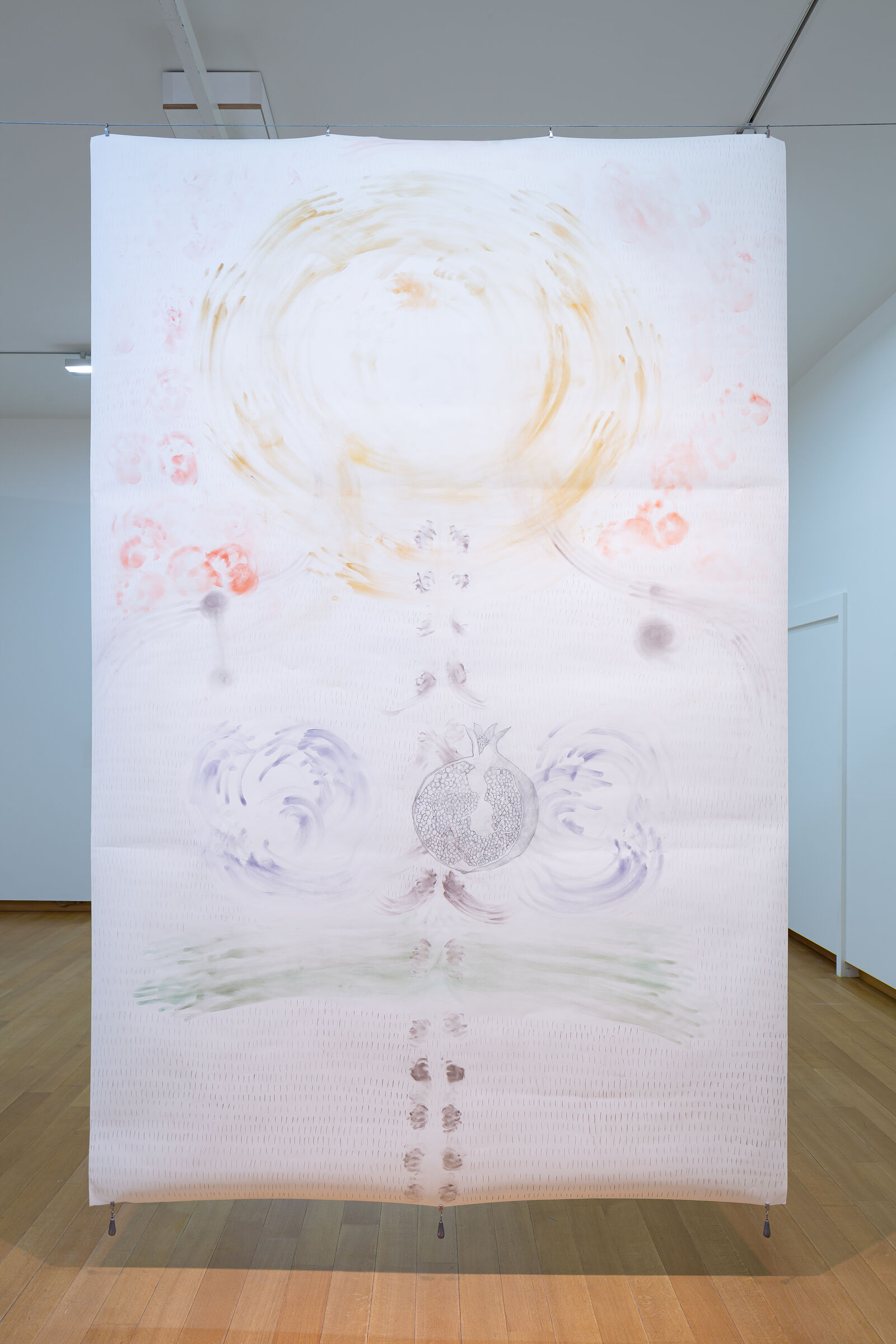
Georgia Sagri, Windface, 2020
charcoal, colored chalk and pencil on paper
Photo: Peter Tijhuis. Stedelijk Museum Amsterdam
In her video, Georgia Sagri incorporates different recordings made by witnesses of her sunset performance. The particular quality of the video material and how it has been edited bring focus to the artist, not as identifiable image, but as a body and a voice in preparation, in recovery. The name Breathing (7_1_7) encodes the balance between the breath in (7) and the breath out (7). In between there is a hold (1), a threshold.
Similarly to the balance between inhale and exhale, the sunset performance is balanced by one at sunrise. November 30, 2020, the first birthday of Ulay since his death on March 2, 2020, coincides with a lunar eclipse. Marking the fleeting and mystical moments of sunset and sunrise, the ending and beginning of night and day, Sagri marks out a space and time where the living and the departed may momentarily connect.
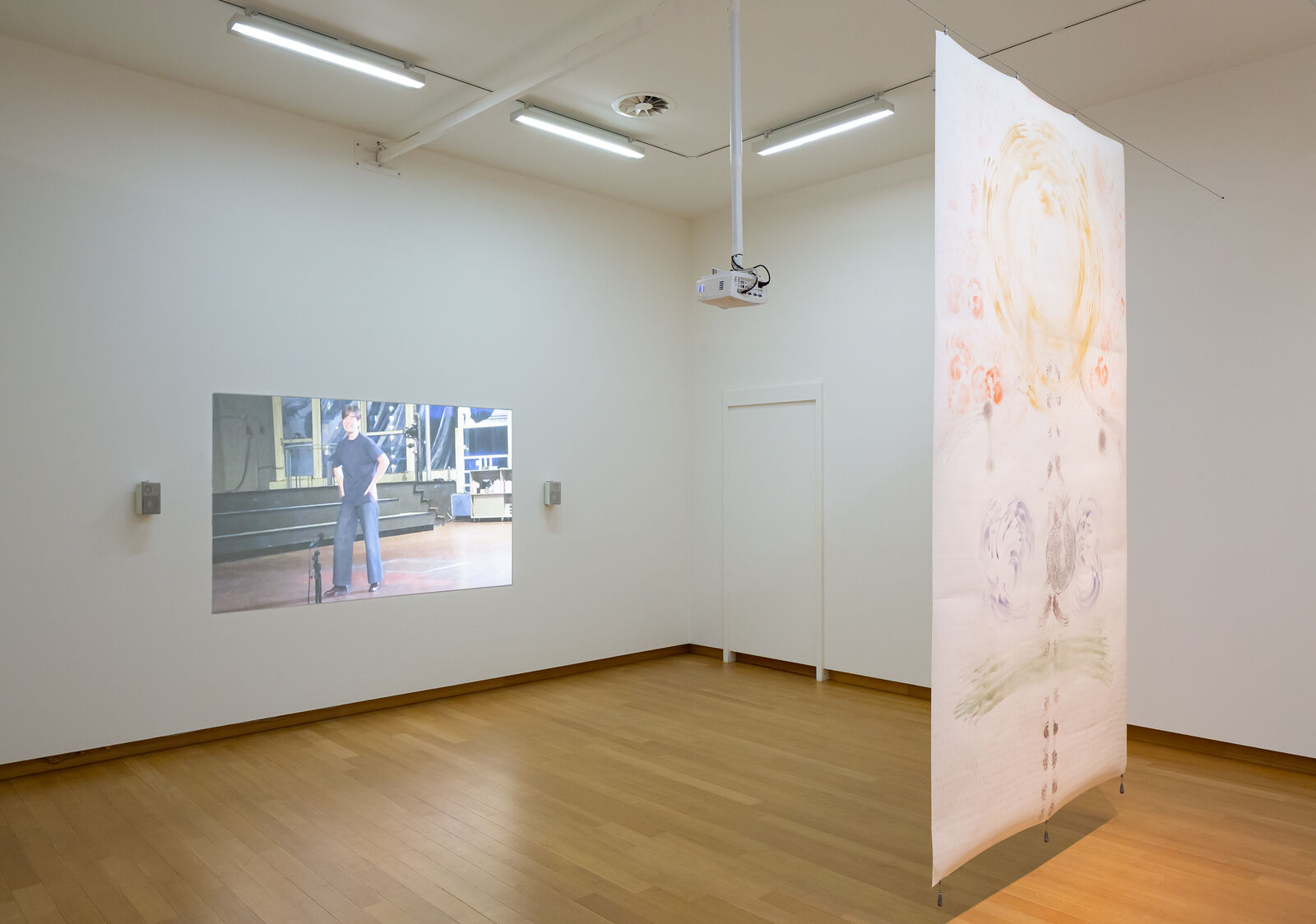
Georgia Sagri, Breathing (7_1_7) with embryac position / Windface sunset sunrise, 2020
HD video with sound, looped; duration: 50 min.
Photo: Peter Tijhuis. Stedelijk Museum Amsterdam
Presented alongside Georgia Sagri’s works is a selection of materials from de Appel’s Archive focusing on Ulay’s performance with Jürgen Klauke, his first contribution to de Appel’s programme in 1975. Keine Möglichkeit 2 Platzwunden explored the experience and consequences of the exchange of identities of the two artists. Also included is Ulay’s personal correspondence with de Appel’s founder, Wies Smals and an issue of Renais Sense Editions developed with Ulay and published by Smals, via her initiative Seriaal in 1974.
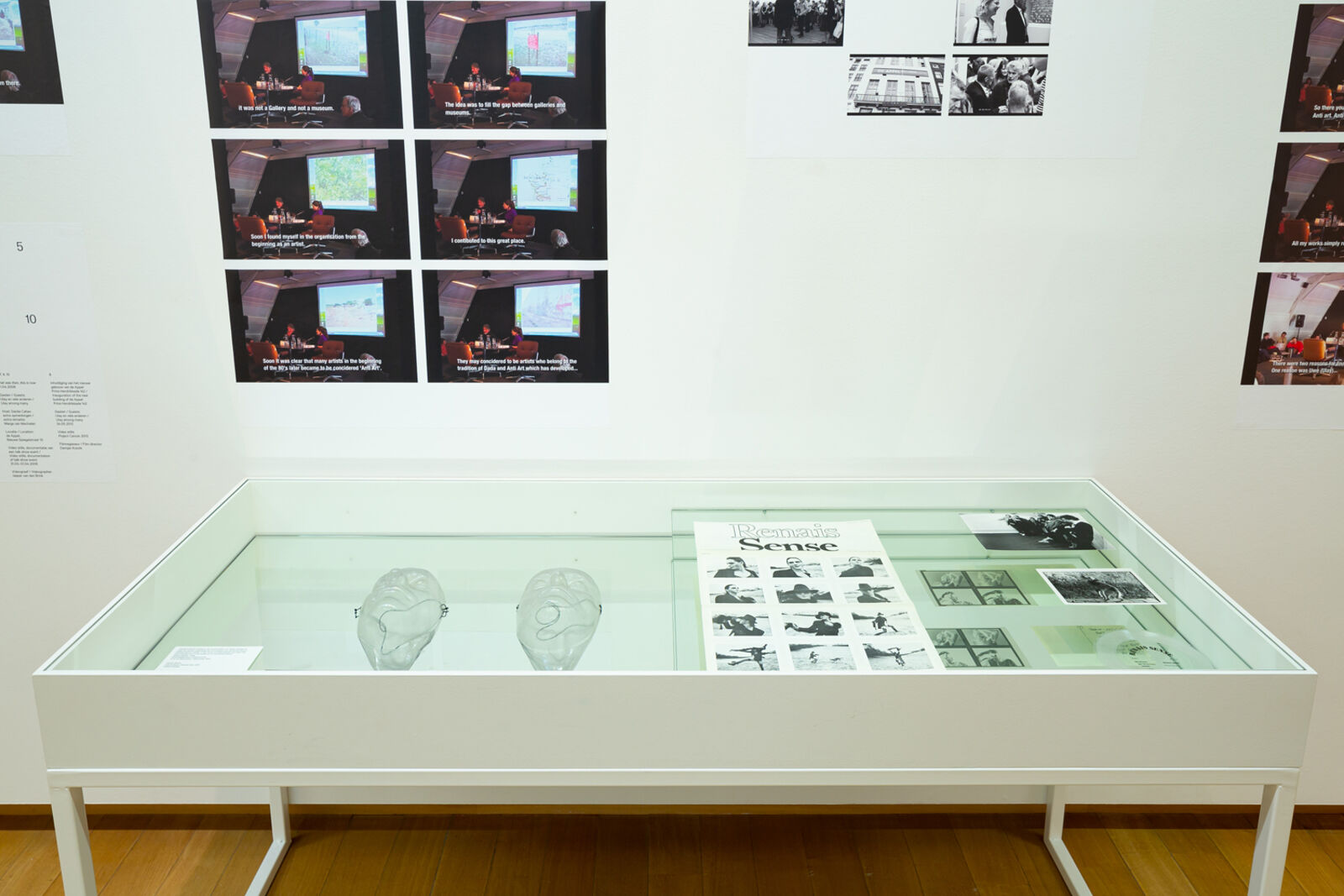
Materials from de Appel Archive.
Photo: Peter Tijhuis. Stedelijk Museum Amsterdam
Working at the intersection of curatorial and artistic practice, Pierre Bal-Blanc proposes Le Salon Turc, a ‘conversation score’, written in response to Ulay’s own notation of his 1976 action Irritation: there is a Criminal Touch to Art. By reading the conversation score as it appears right below this text, viewers can find out more about the sculptural contribution of artist Nilbar Güreş as well as the selection of a painting from the Stedelijk’s collection by Jean Brusselmans and a musical theme by Camille Saint-Saëns.
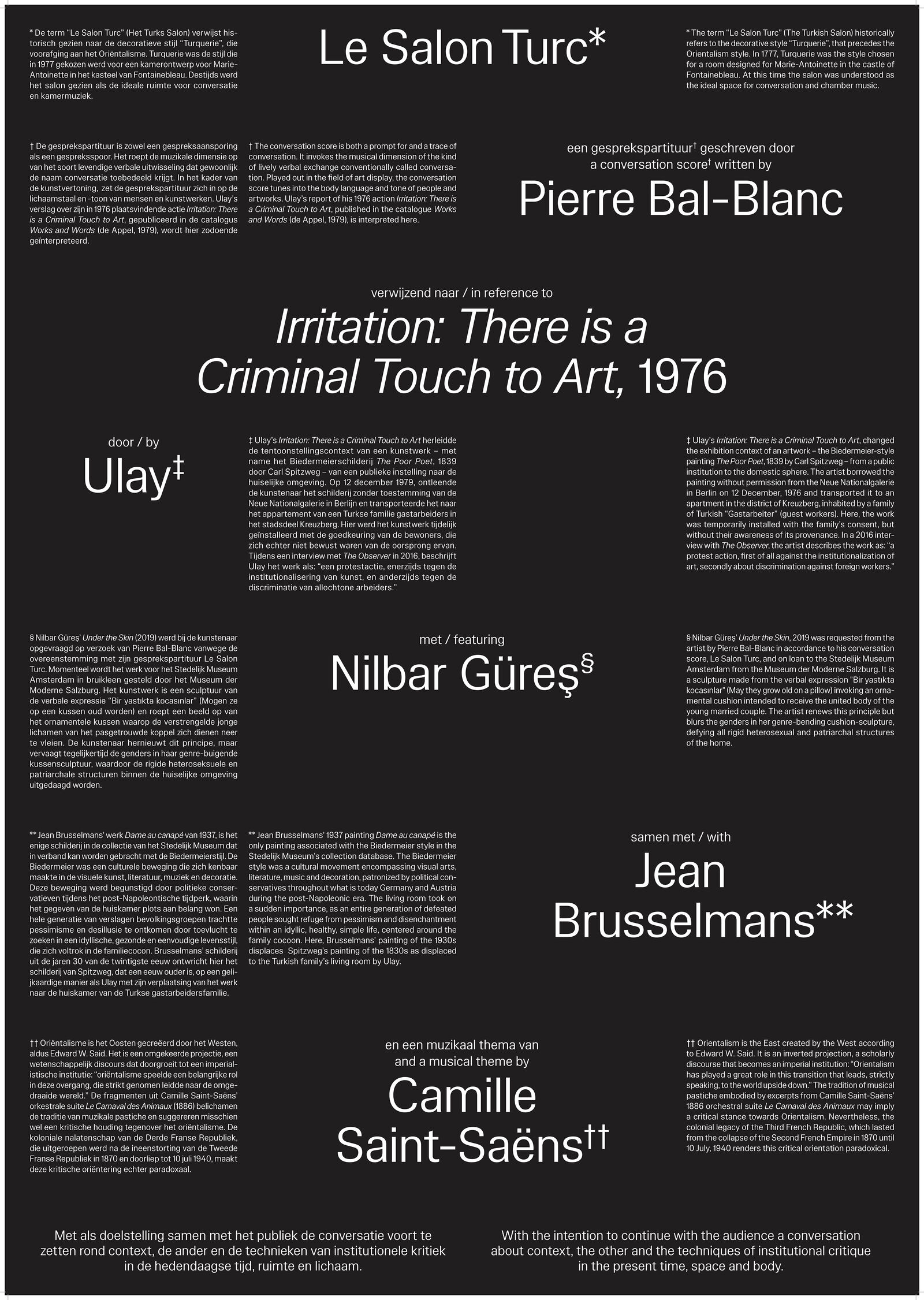
Pierre Bal-Blanc, conversation score of Le Salon Turc, 2021. Designed by Bardhi Haliti for A0 print
Below you can see a video of the installation, made by Pierre Bal-Blanc. As Dutch cultural institutions are currently closed due to the regulations surrounding Covid-19, this documentation offers a subjective glimpse of how the conversation score plays out in room 1.15 of the Stedelijk Museum Amsterdam.
Pierre Bal-Blanc, video document of Le Salon Turc, 2021, duration: 6 min
Click here to read the article Episode V: Le Salon Turc by Pierre Bal-Blanc, as featured in The Curatorial Gaze for Flash Art Magazine, issue 334 Spring 2021.
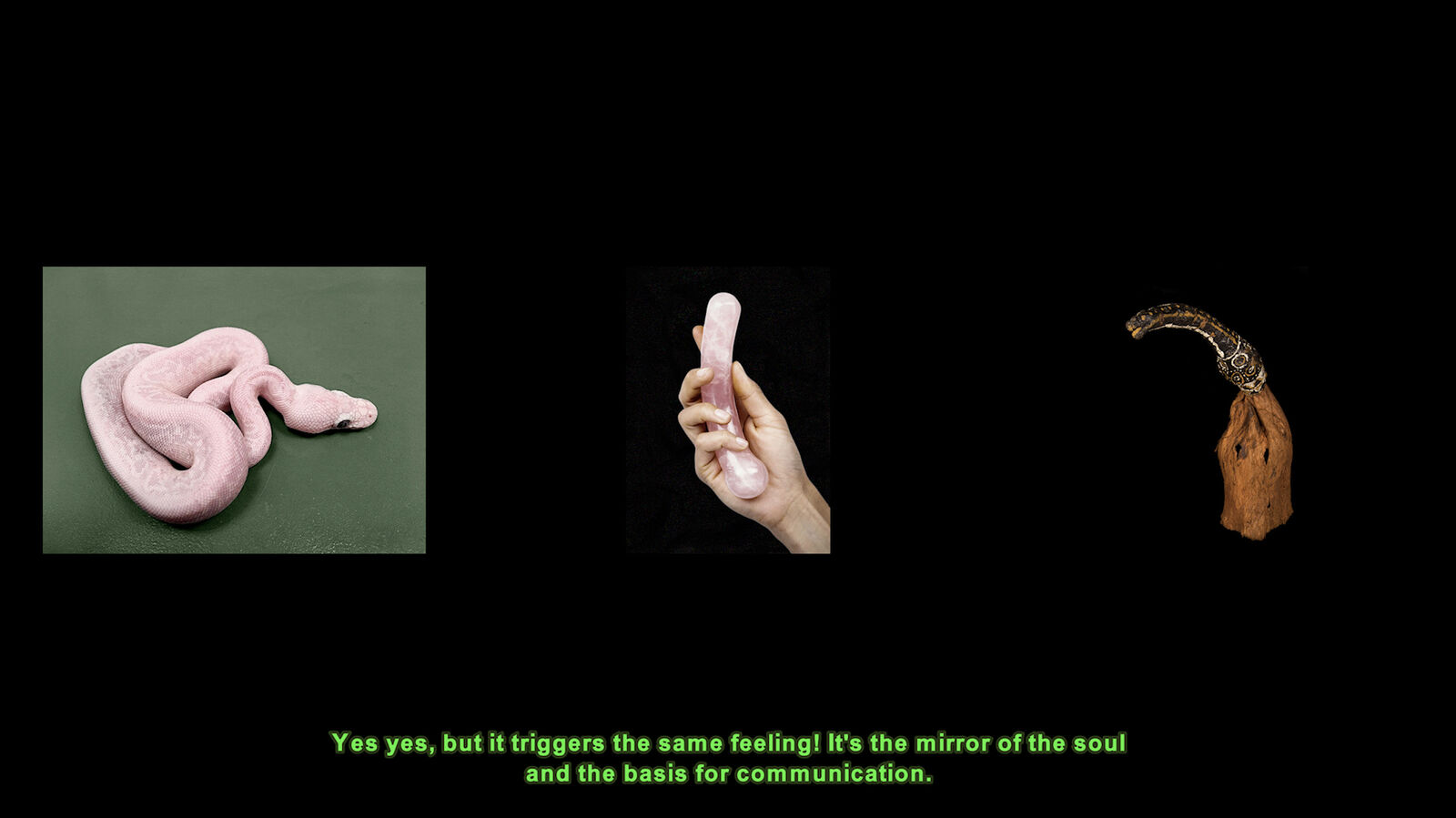
Lotte Reimann, objects and people, 2021
HD video with sound, duration: 20min45 (film still)
‘Love, in its multiple incarnations as desire, is as open-ended as life itself and remains the ground of meaning. This erotic principle is operative not just among human souls but everywhere in the universe’.
objects and people, 2021 begins with this quote originally attributed to Plato[1] but often re-approached and negotiated by contemporary theory, design and architecture. For the third chapter of Here is Ulay with, Lotte Reimann examines not only a symbolic and generic aspect of this statement but the literal one as well. Presented in special format online for one week is her new film, objects and people, which explores the phenomenon of Objectum Sexuality (OS), a “female fetish” – something considered inexistent as a concept by western cultural history and psychology in the past century – wherein protagonists engage in romantic, love relationships with objects. OS raises key questions regarding our dichotomous cosmology (naturalism), which divides humans into body and mind/soul and the rest of the world into nature and culture/society. In preparation, Reimann has been conversing with women practicing OS and her film shares archival images of objects that have been deeply desired. Reimann’s cinematic pace and soundscape allows a process of deeper and more empathic understanding of this love to unfold.
Ulay’s own understanding of objects and materials as ‘energy-charged’ and his engagement with spiritualism as well as his ‘fluid’ perception of gender serves as a point of contact. While this consciousness is present throughout his work, it becomes an imperative in Positive Zero, 1983, a sound performance for a theater stage, created together with Marina Abramović, wherein sound, colors, and objects are attributed animistic values. Positive Zero was performed three times during the Holland Festival in 1983 in stages across the Netherlands. It signals a transition in the artists’ collaborative work towards a more wholistic understanding of body/mind/spirit found in Tibetan Buddhism and related cosmogenies.
About Lotte Reimann
Lotte Reimann studied fine arts with a favor for photographic images.
Her work gives insight into personal worlds, leaving room for her own artistic perspective. Found and own images, texts, and sounds connect easily into open story lines. These fragmentary narratives touch on existing power structures, e.g. between author and subject. The 'erotic' body in ‘modern’ society, and the archive as a controversial tool for both understanding and authorization are Lotte's recurring subjects of investigation. By collaborating with the so-called 'other,' her work loosely links to post-colonial theory. The stories and characters glisten in ambiguity and inexplicability. They are stories designed to dodge clarification and avoid definitive explanations, cast off stereotypes and challenge conventional analysis. Lotte's works have been shown and discussed internationally in the European Union and the USA. In 2017/18 Reimann received the AFK 3Package Deal stipend with the support and the guidance of the AFK Visual Arts Coalition, formed between the Gerrit Rietveld Academie, Foam and de Appel.
[1] Bouchez, H., A Wild Thing, p.85, quoting Pérez-Gómez, A., Built upon Love, p.5, quoting Plato.
How is Ulay’s presence felt at de Appel today? The multifaceted artist was key in the evolution of our institution, founded in Amsterdam in 1975. Beyond contributing memorable works and words throughout the years, Ulay was a key advisor for the founders. And his spirit gives us courage to make space and time to continue posing vital questions – questions of life, death, appearance, disappearance, indexing, archiving, art, anti-art, society and its irritations.
At Stedelijk Museum Amsterdam, de Appel transforms Room 1.15 into a place where Ulay’s presence is thought and felt beyond his death. This is a collective effort of invited artists, programme contributors and our lively archival materials.
Curated by Danai Giannoglou with de Appel archivist Nell Donkers, designed by Bardhi Haliti. With thanks to the dedicated teams of Stedelijk Museum Amsterdam and ULAY Foundation.
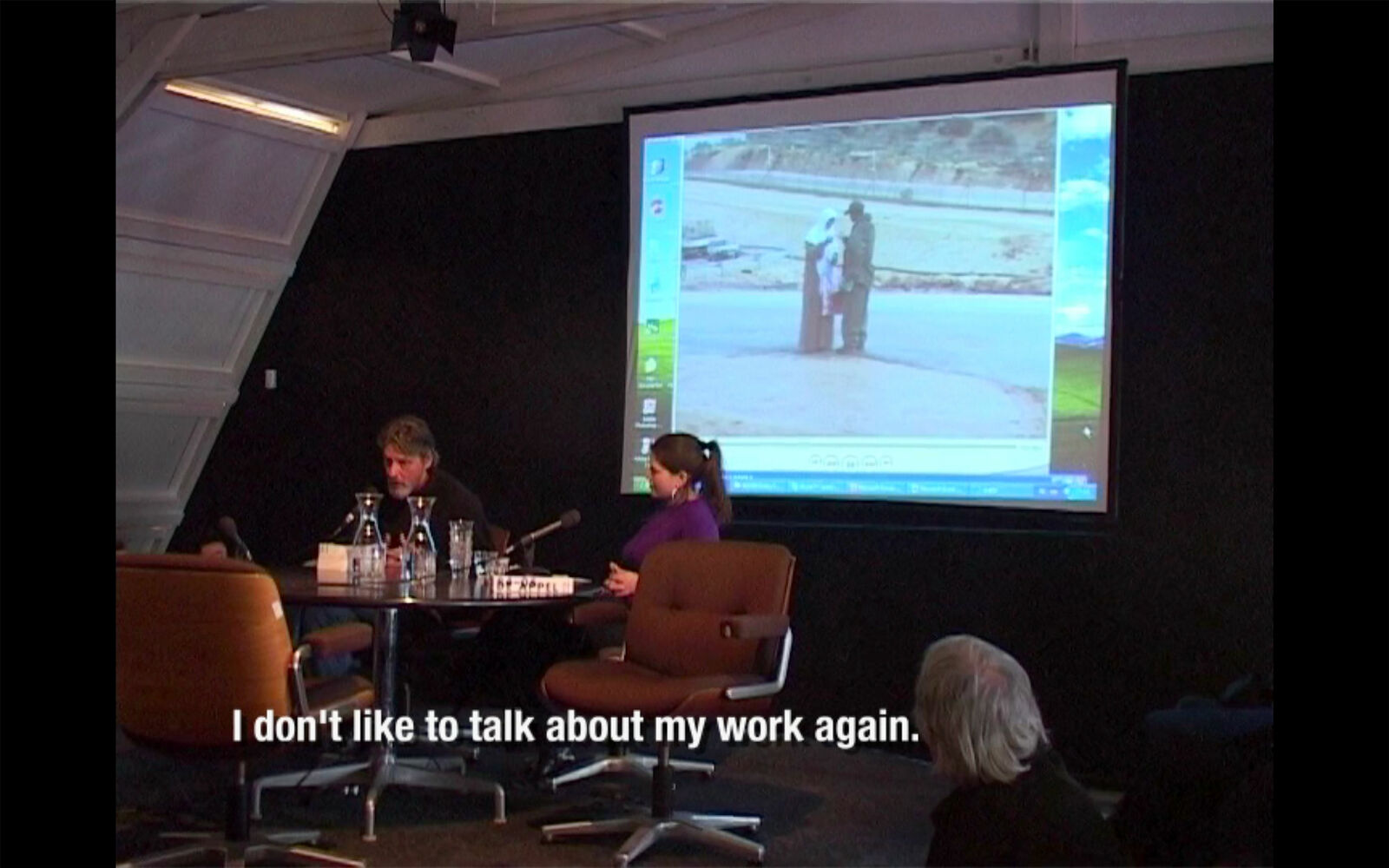

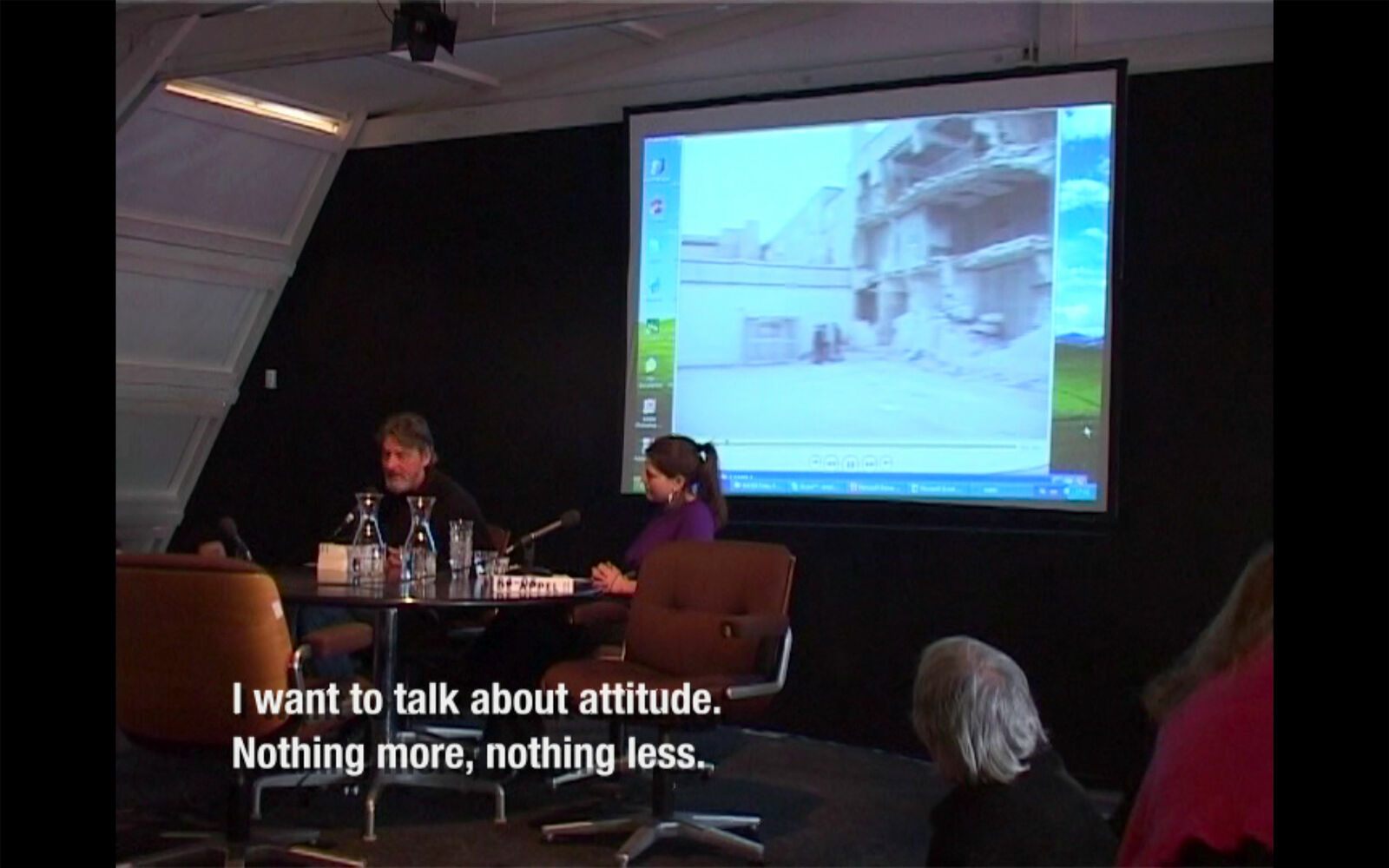

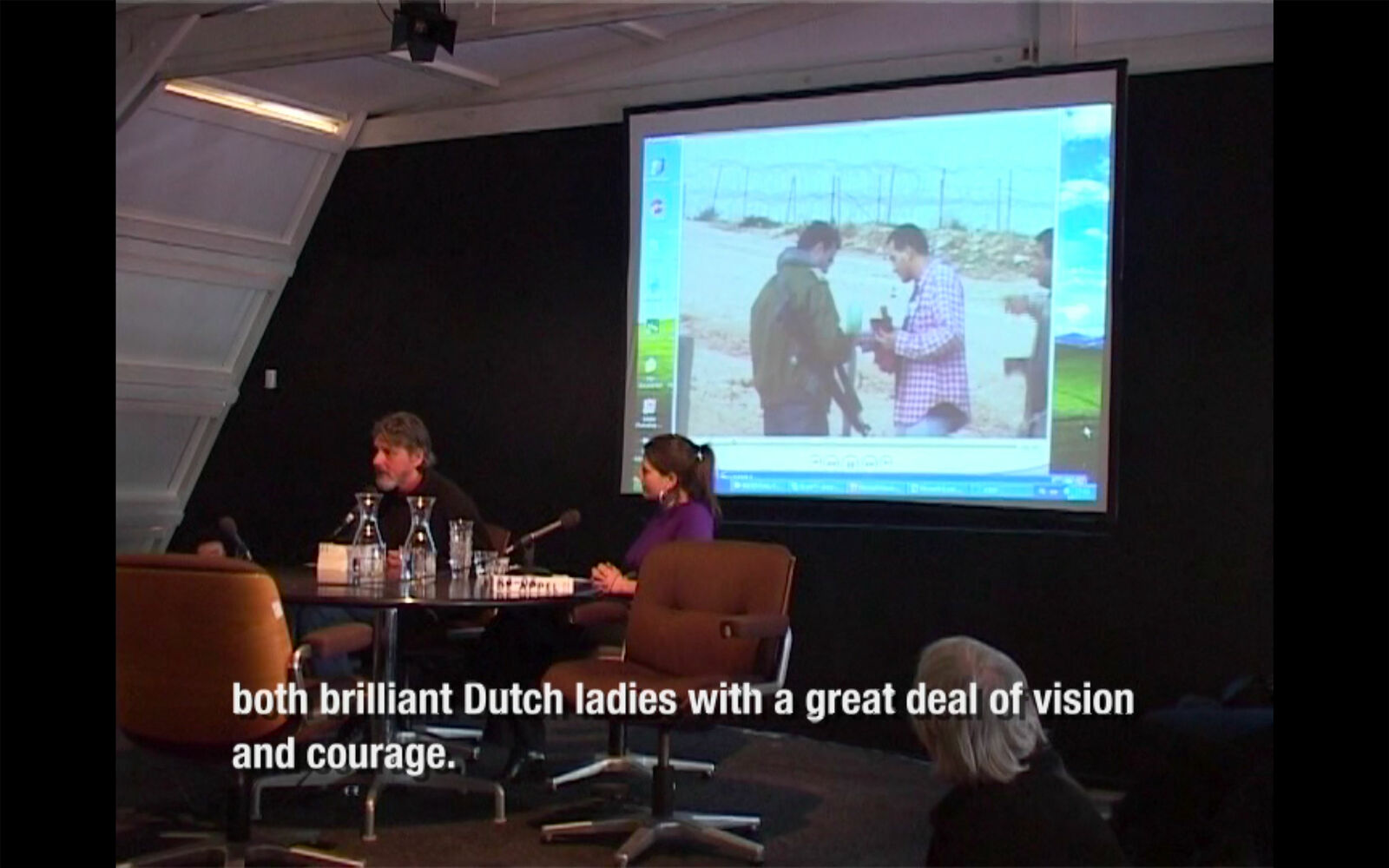

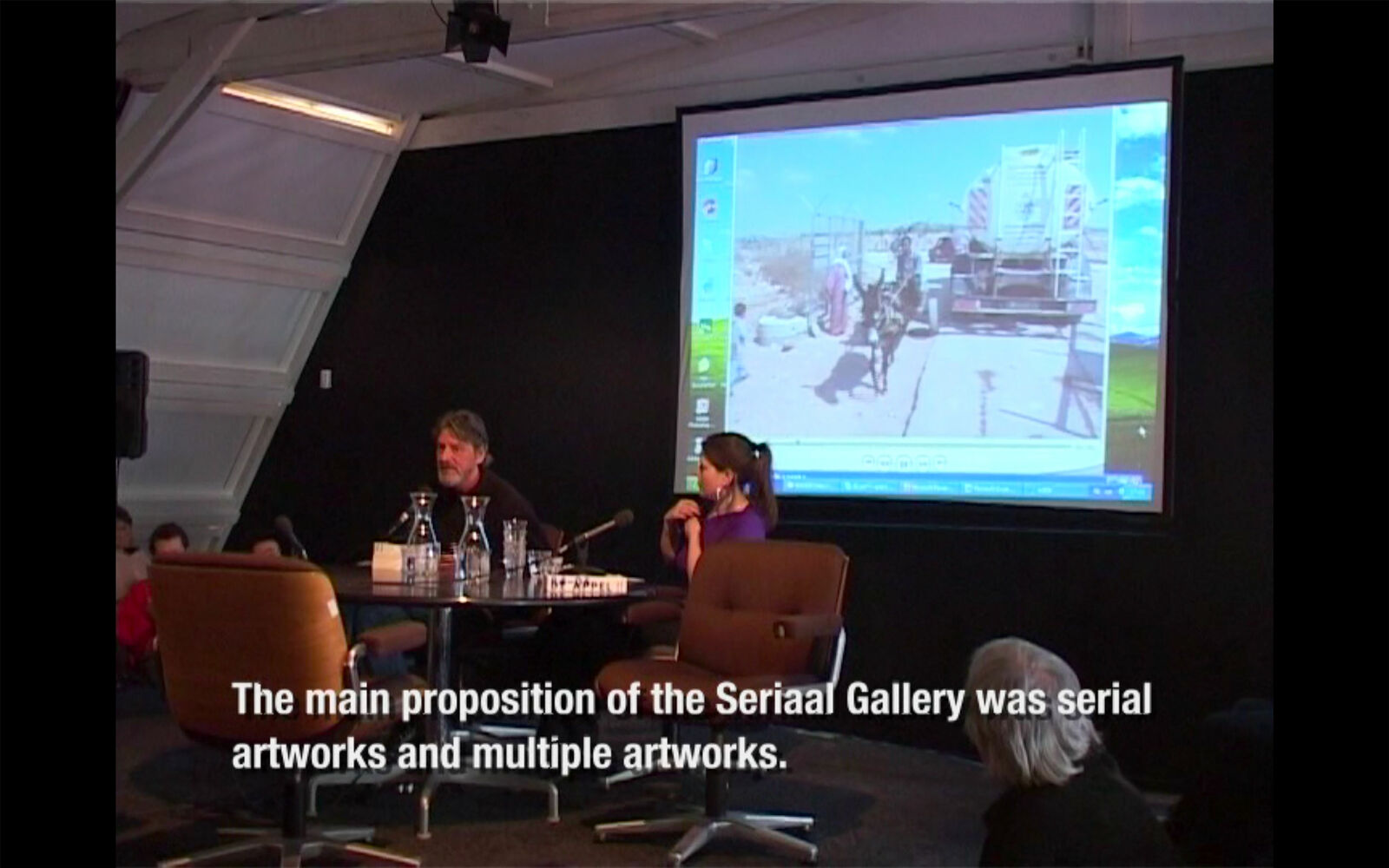
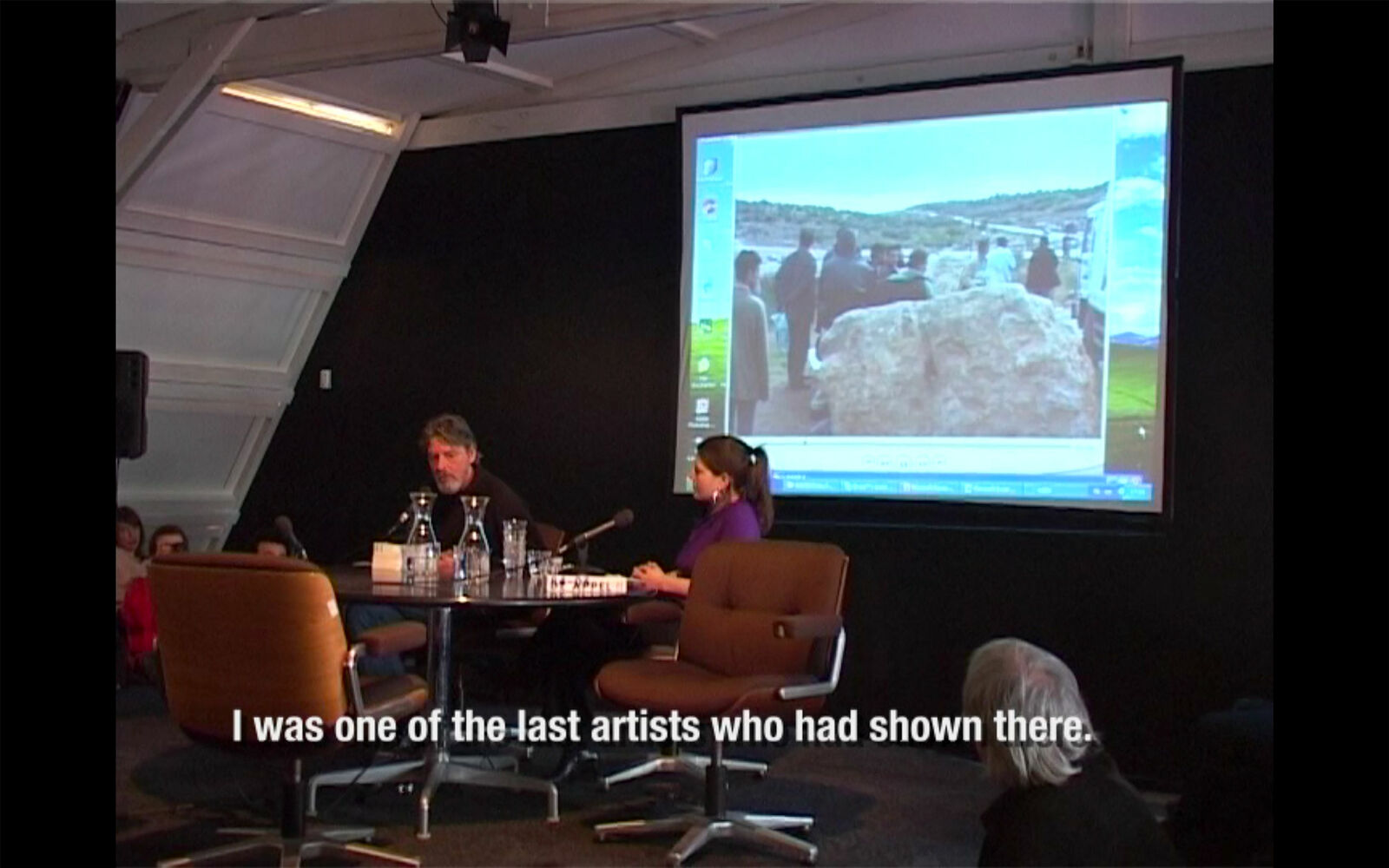
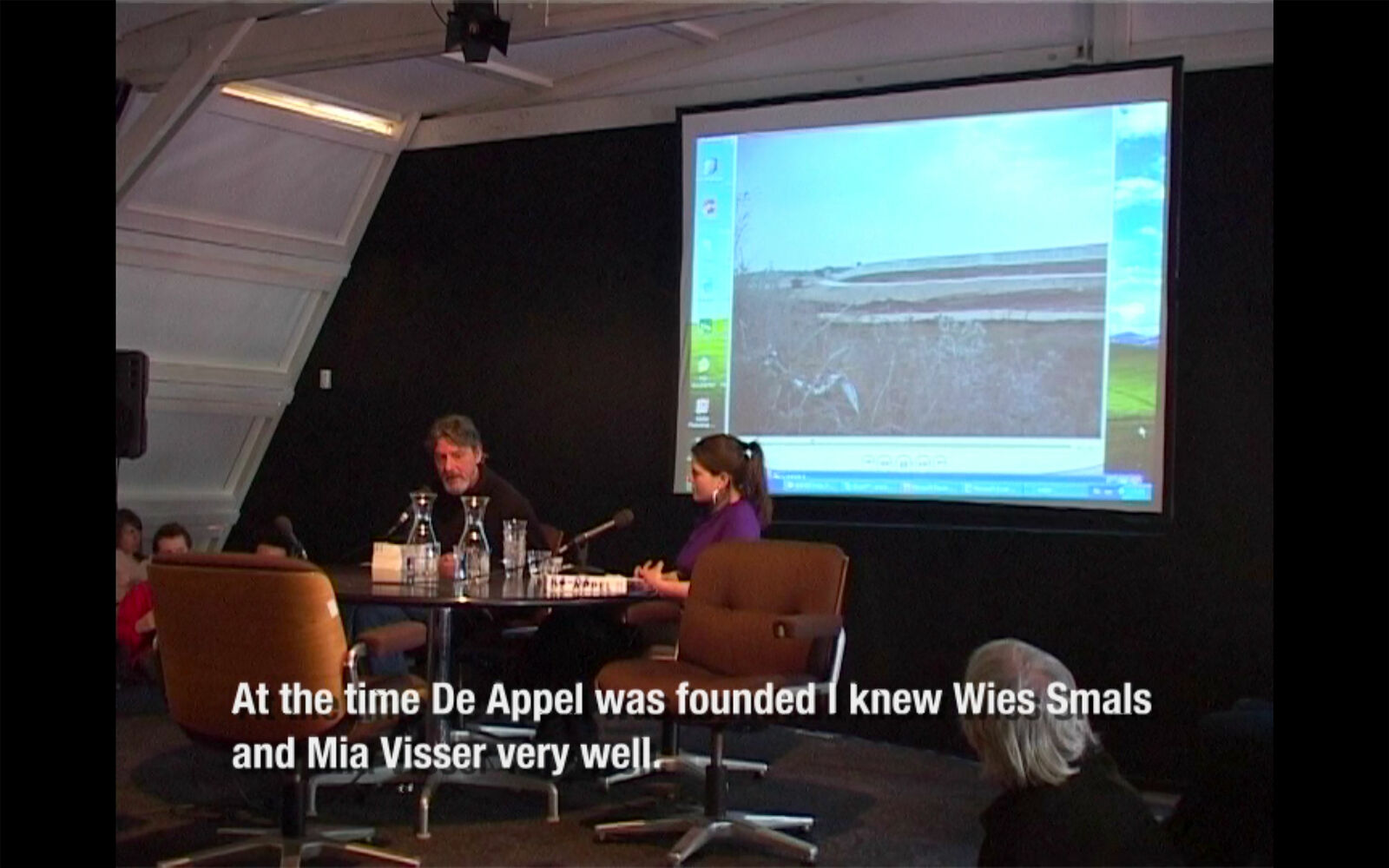

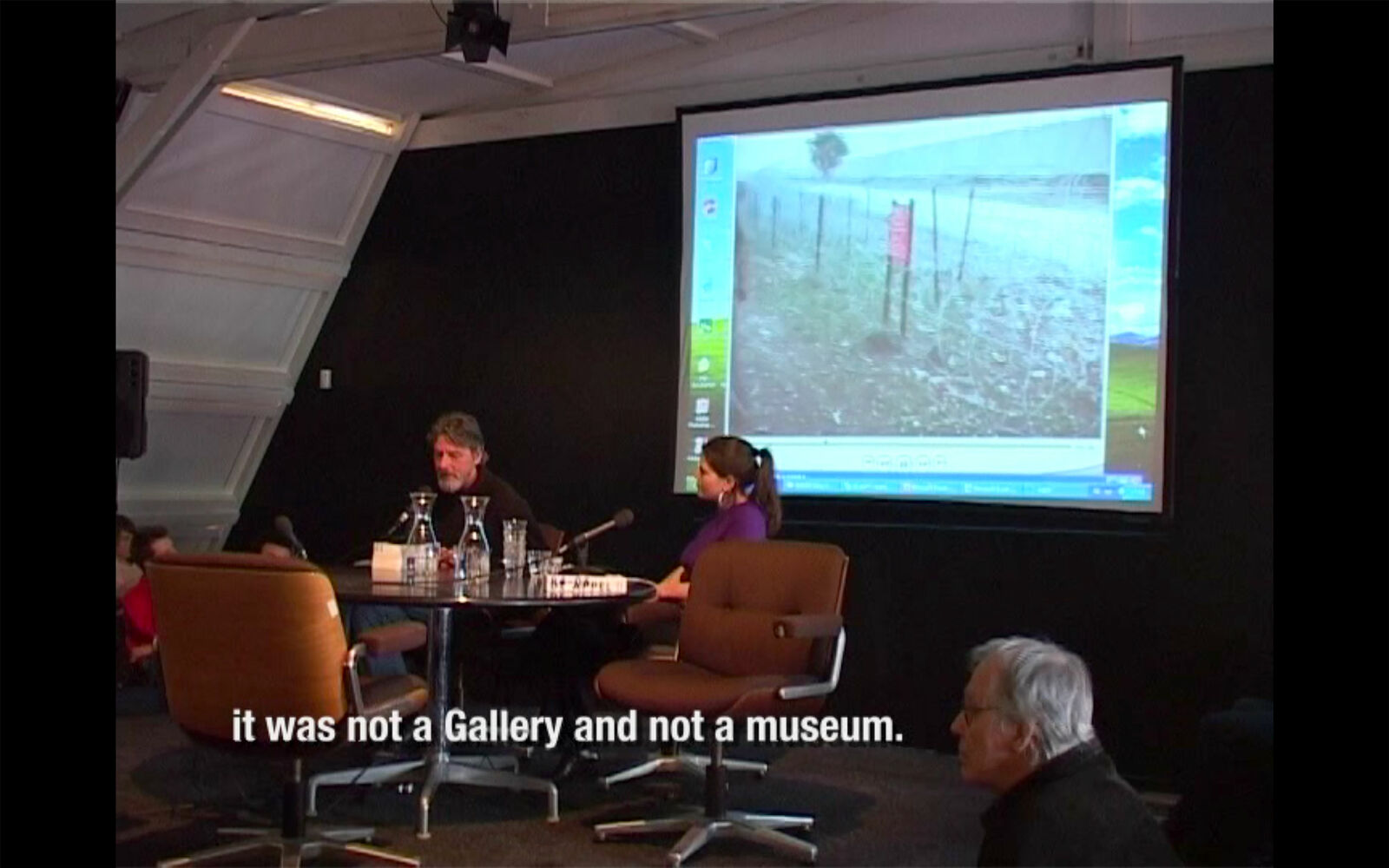
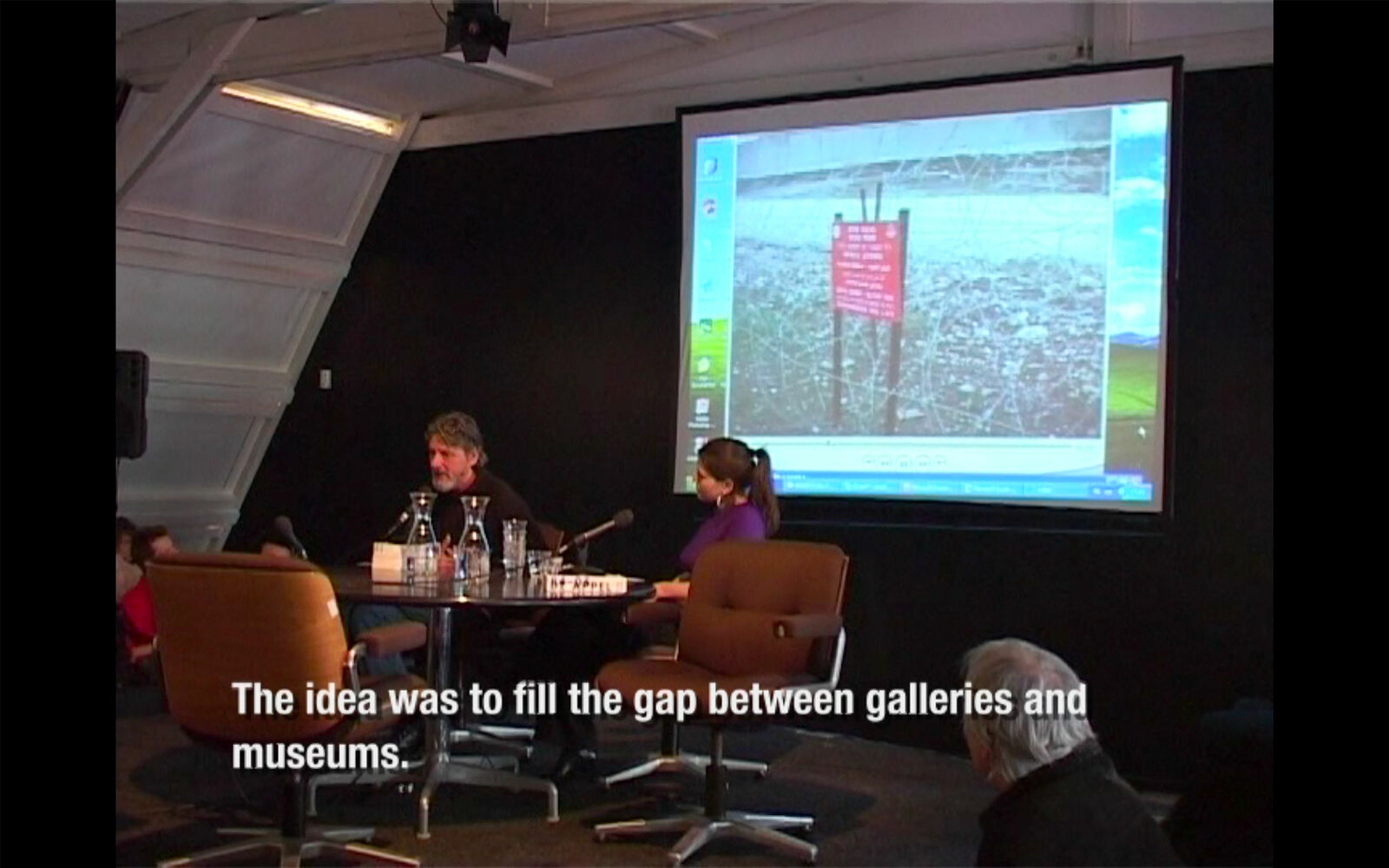
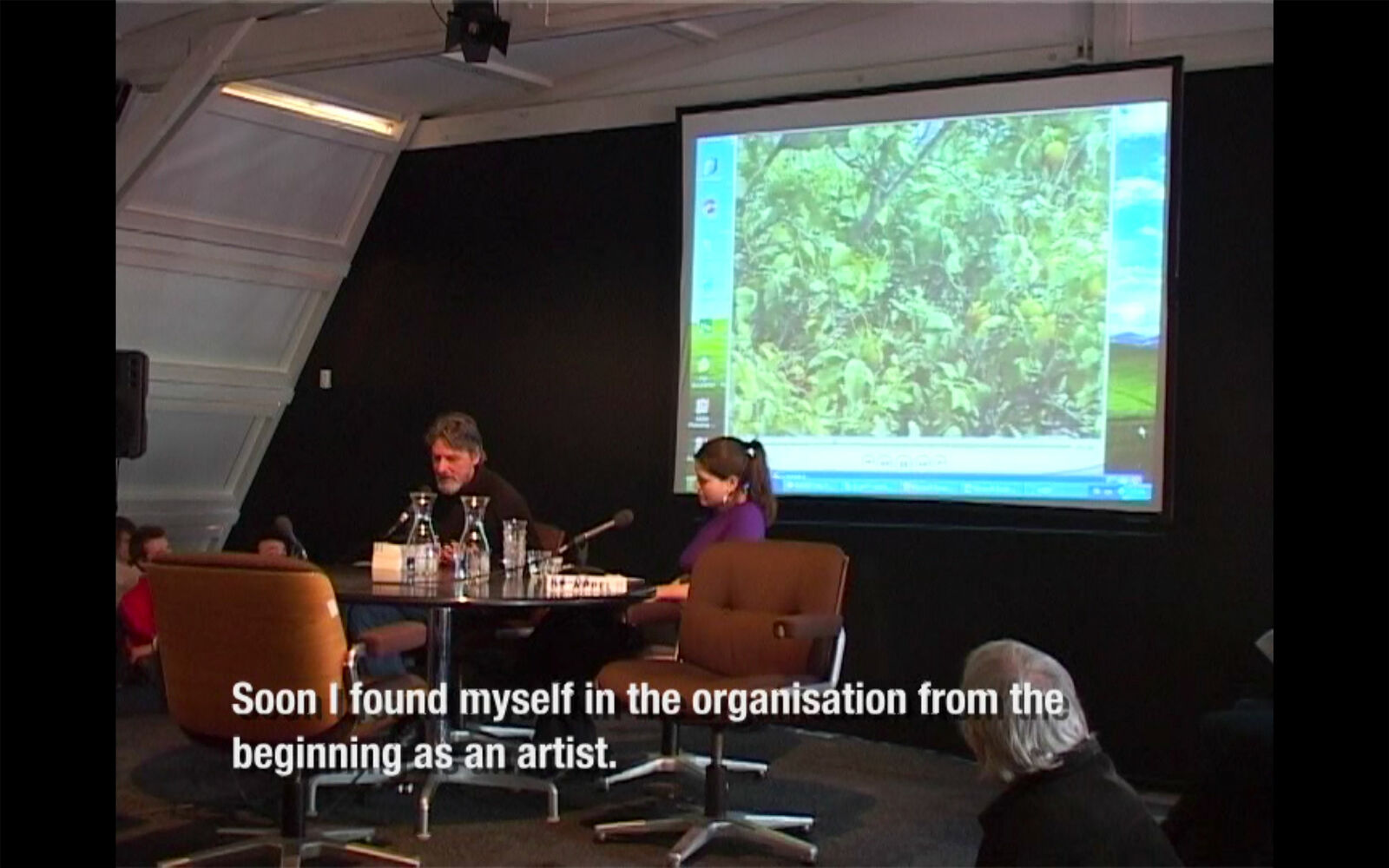
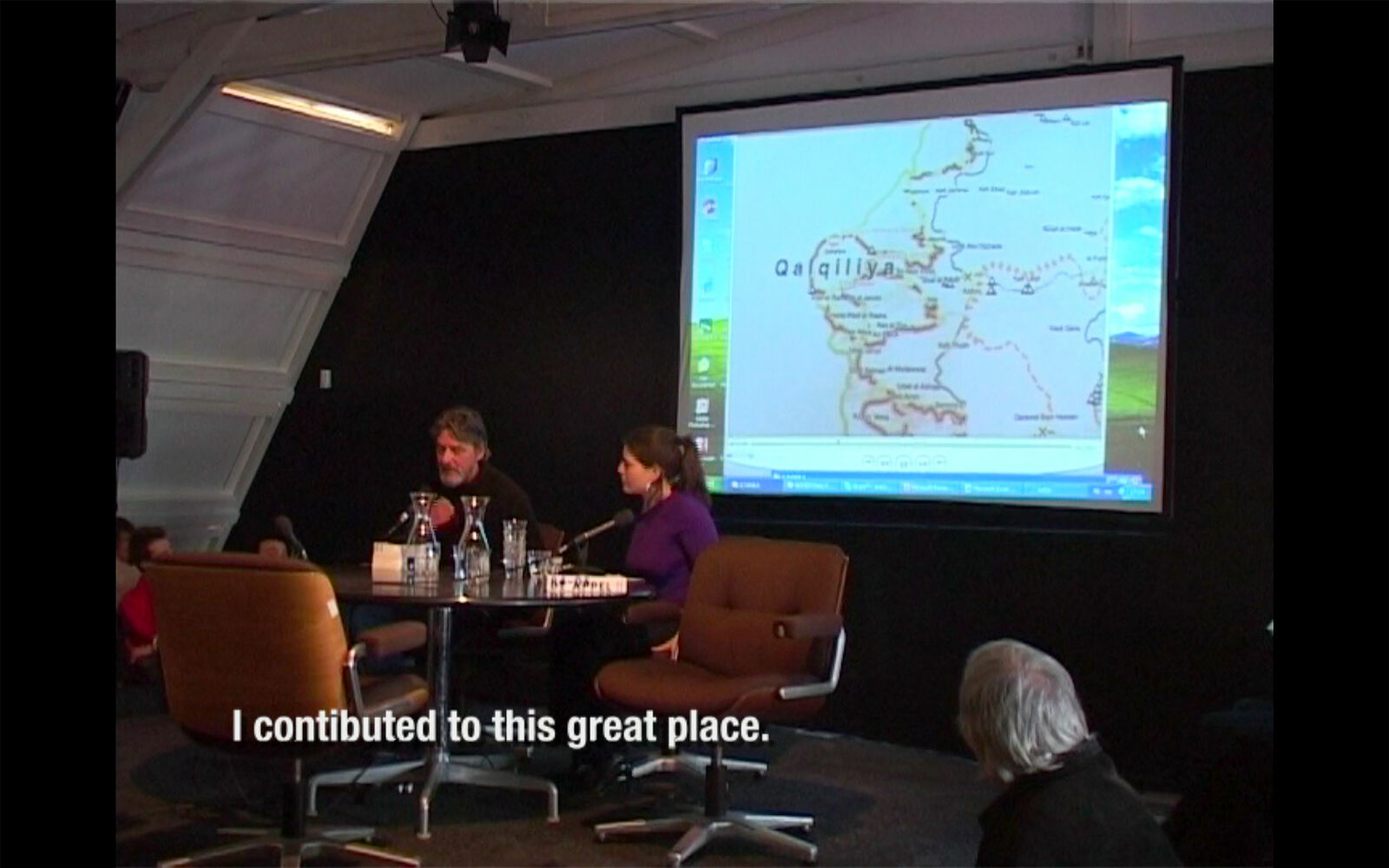
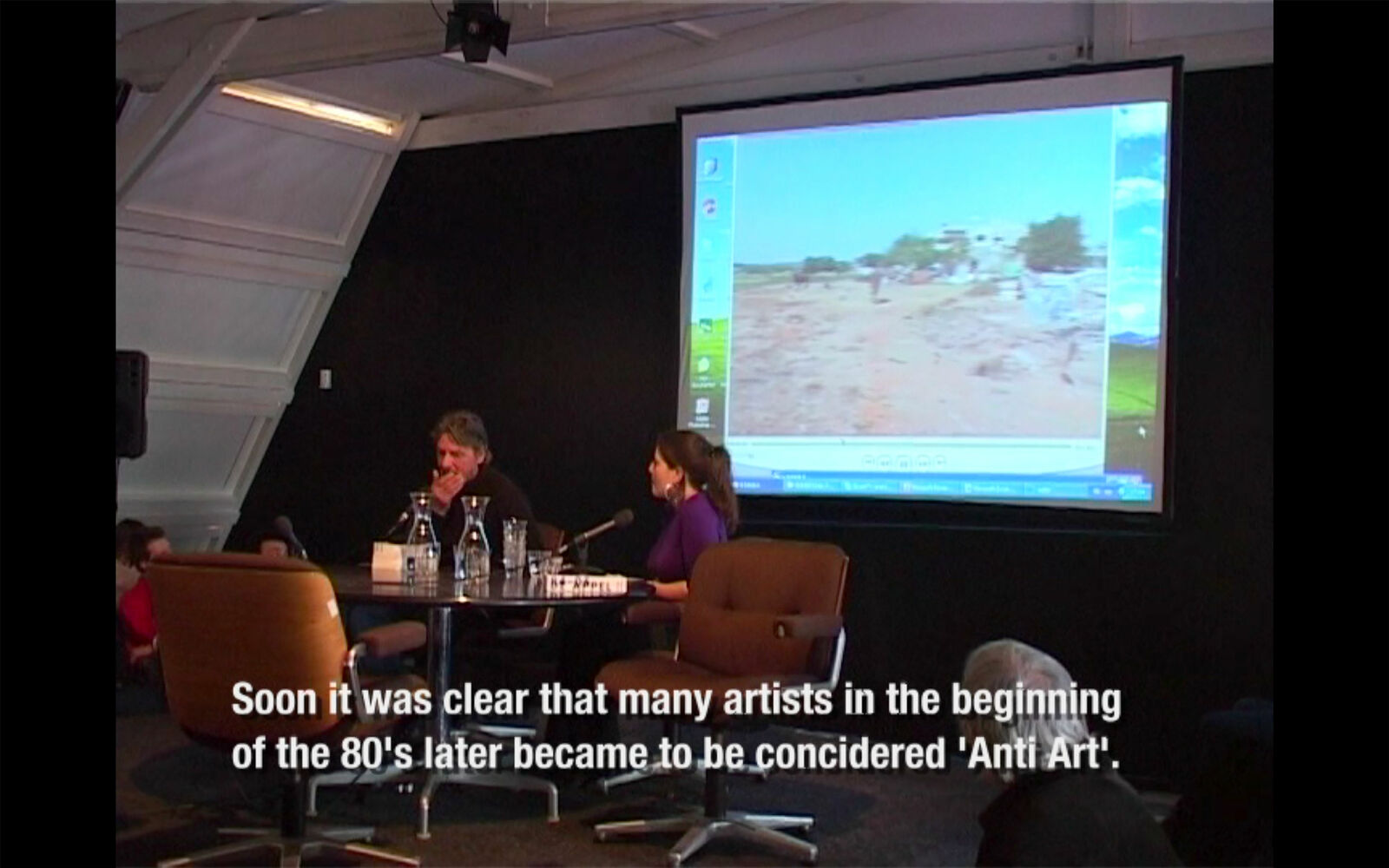
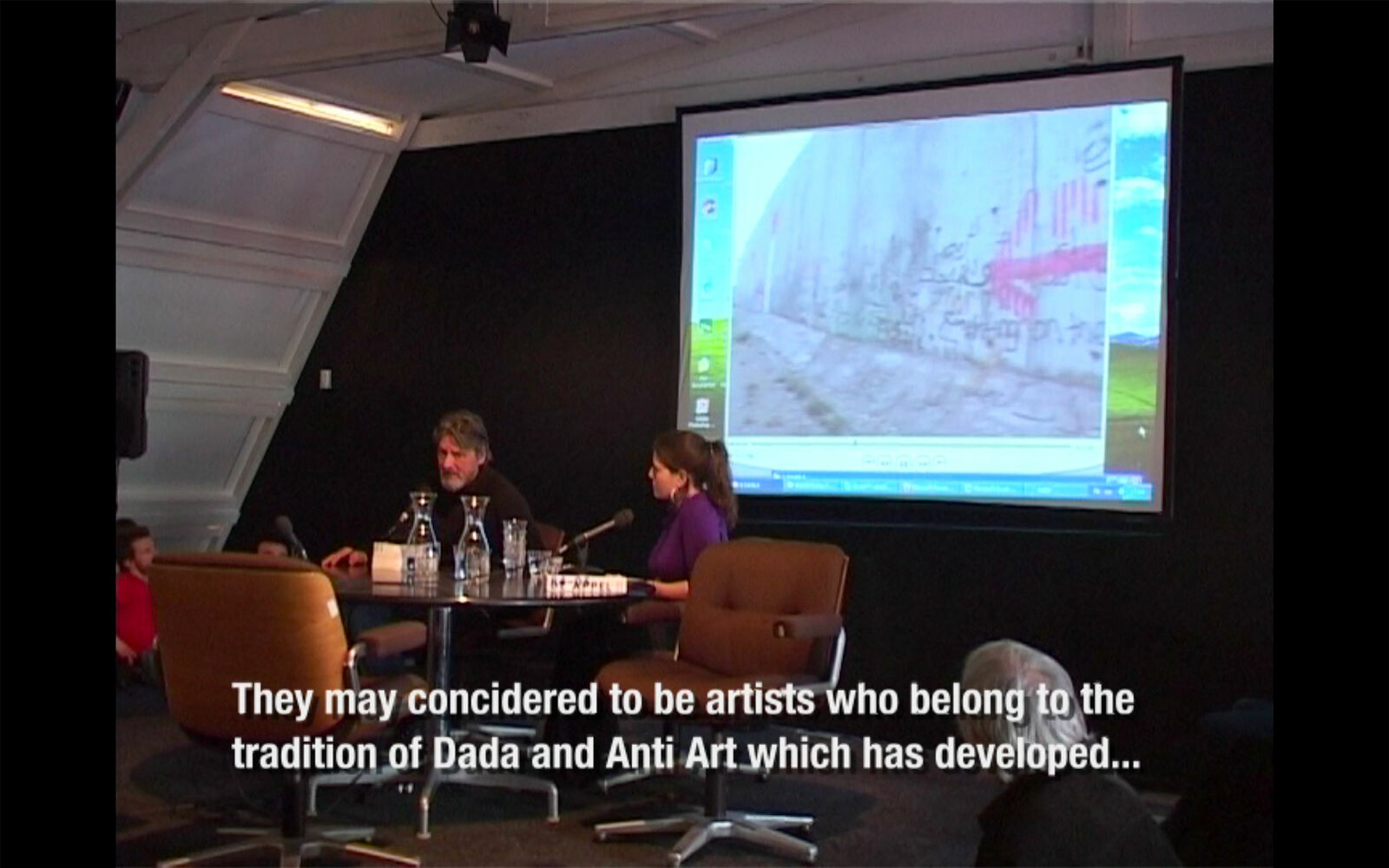
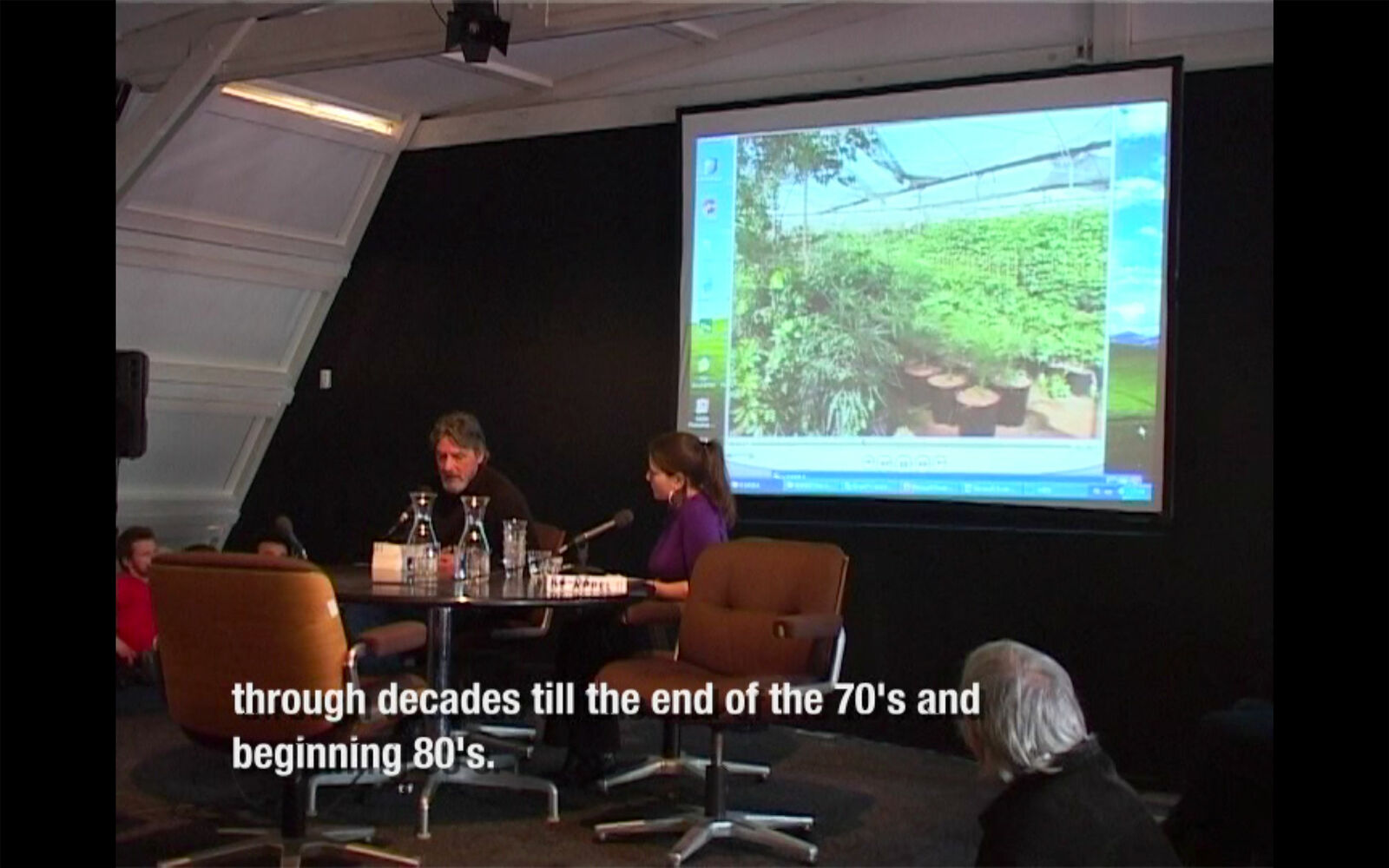
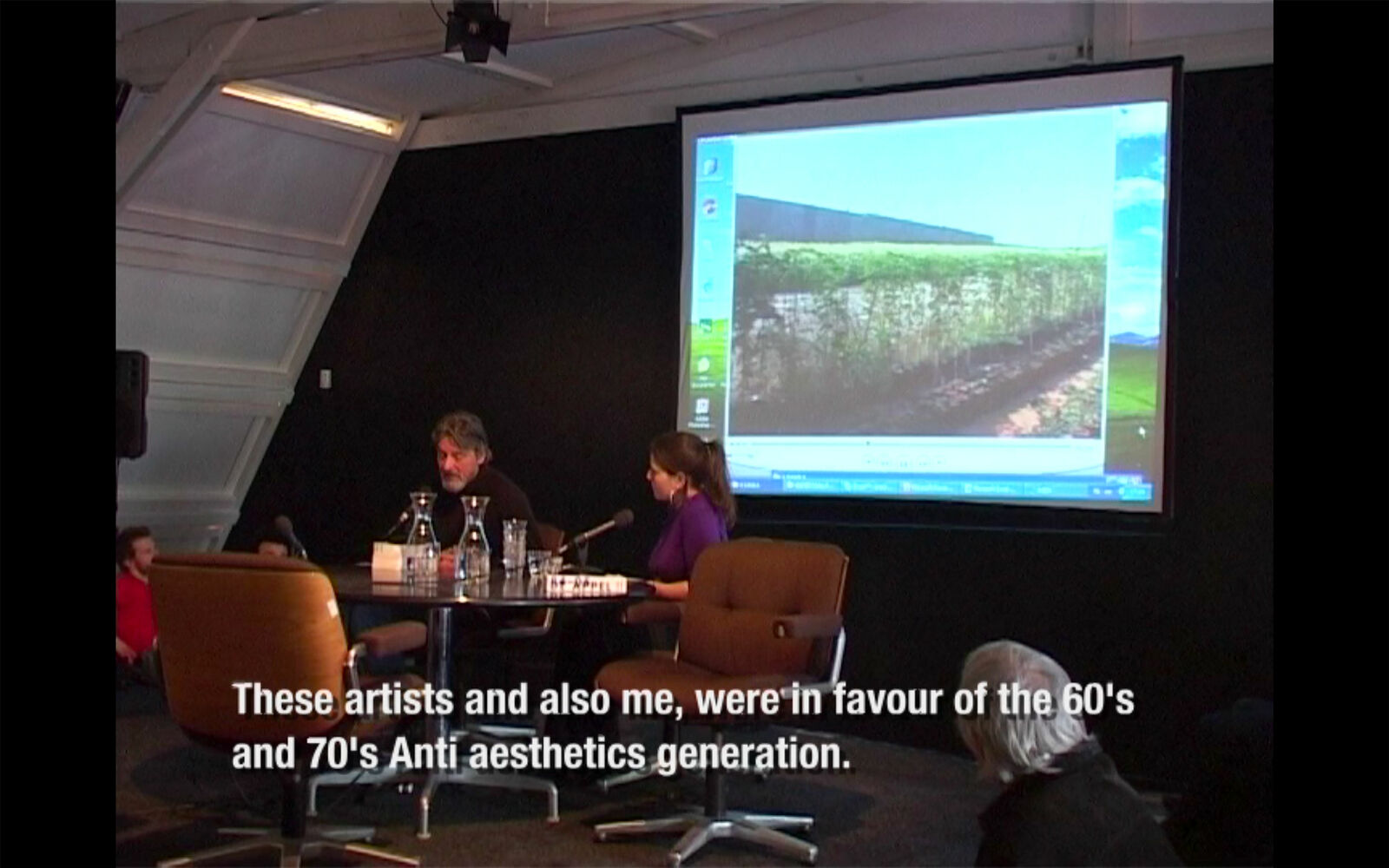
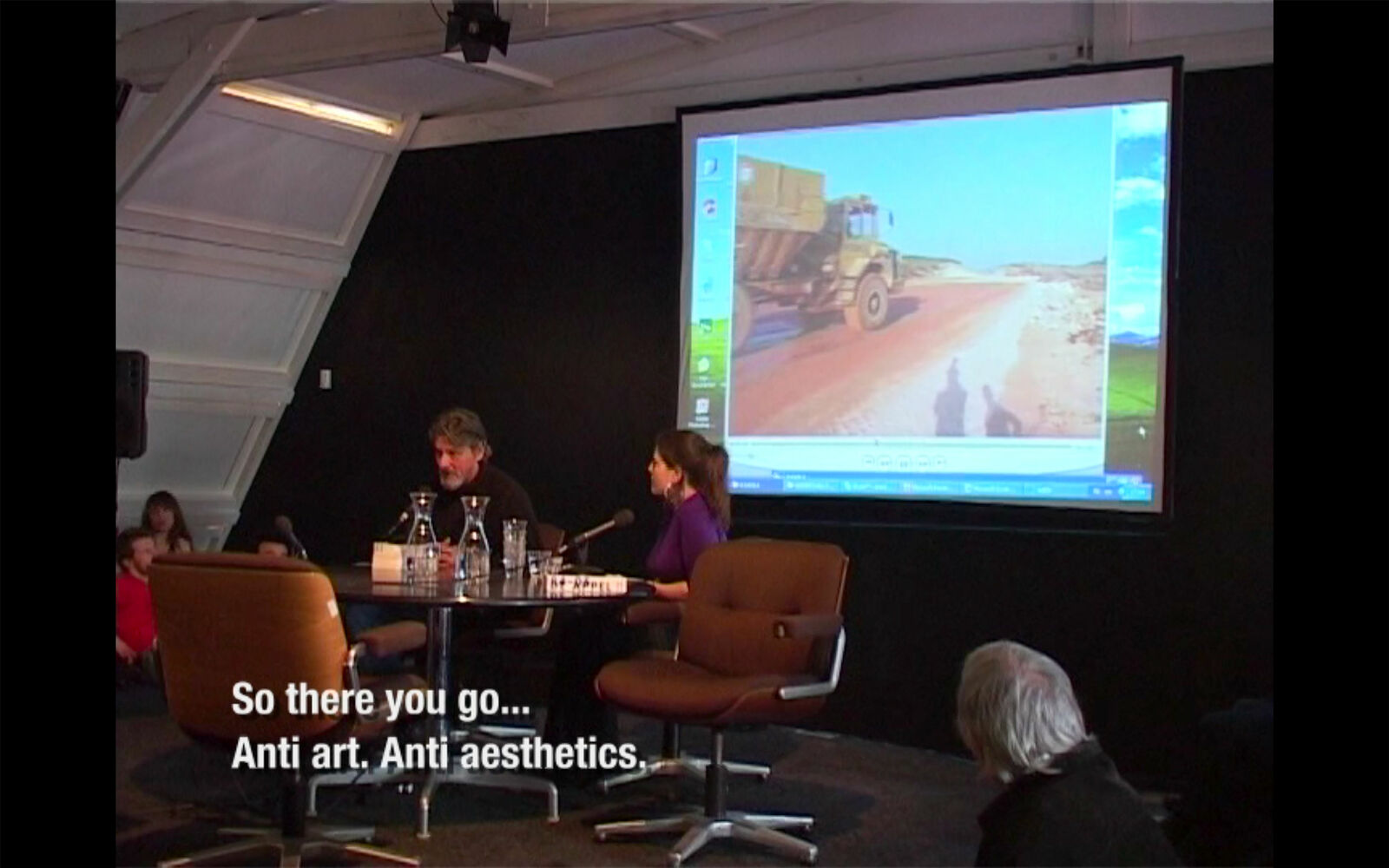
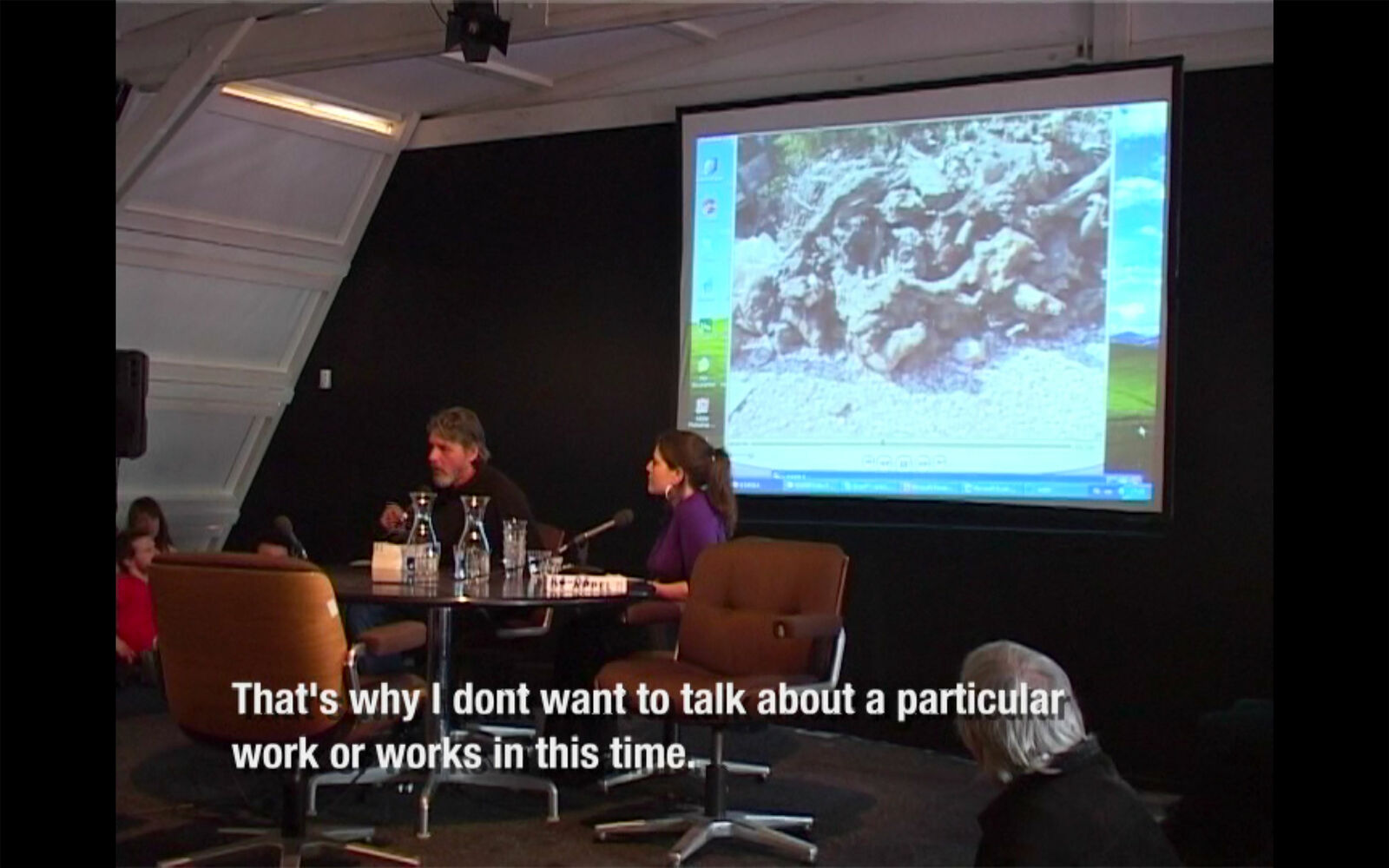
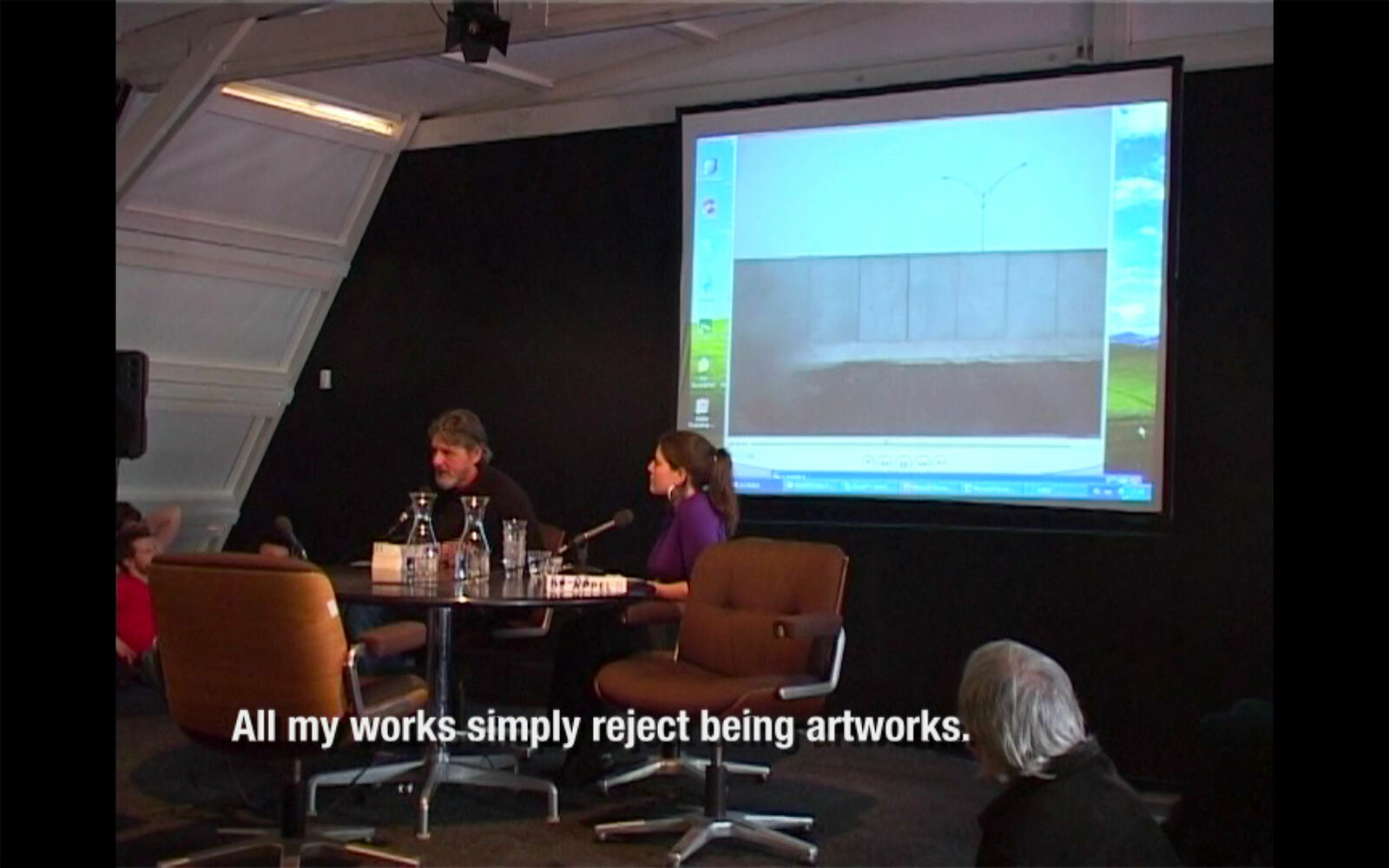

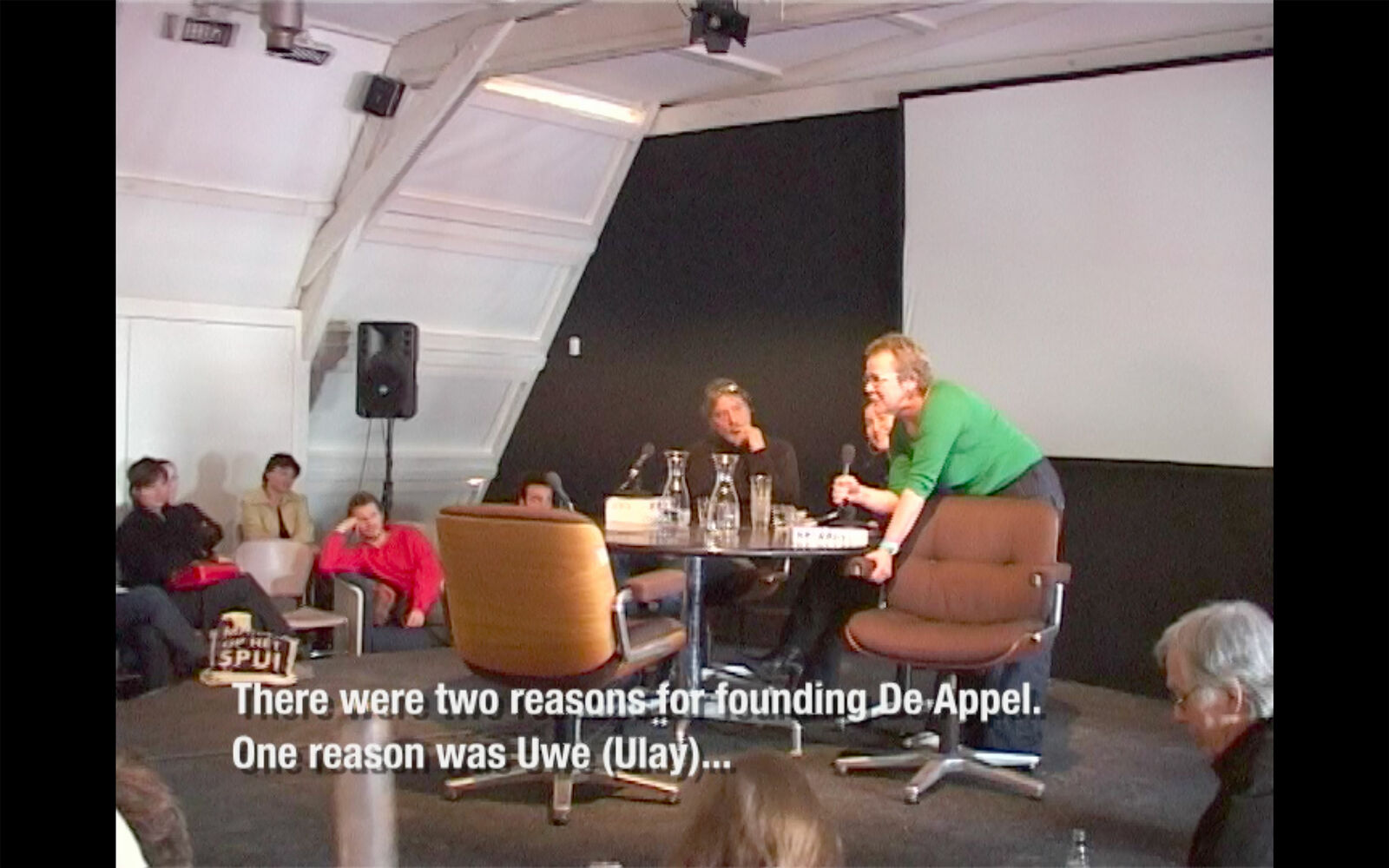
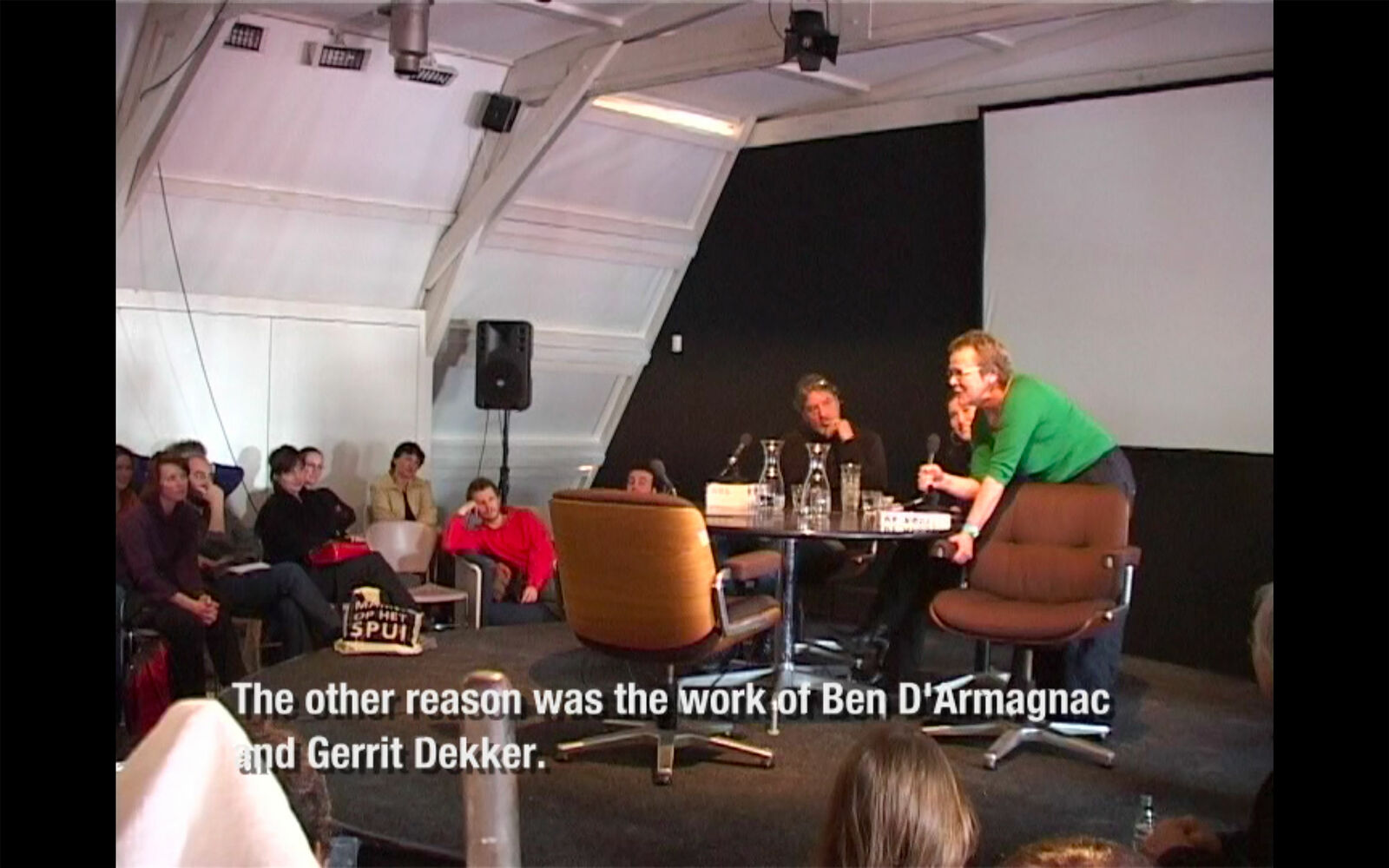


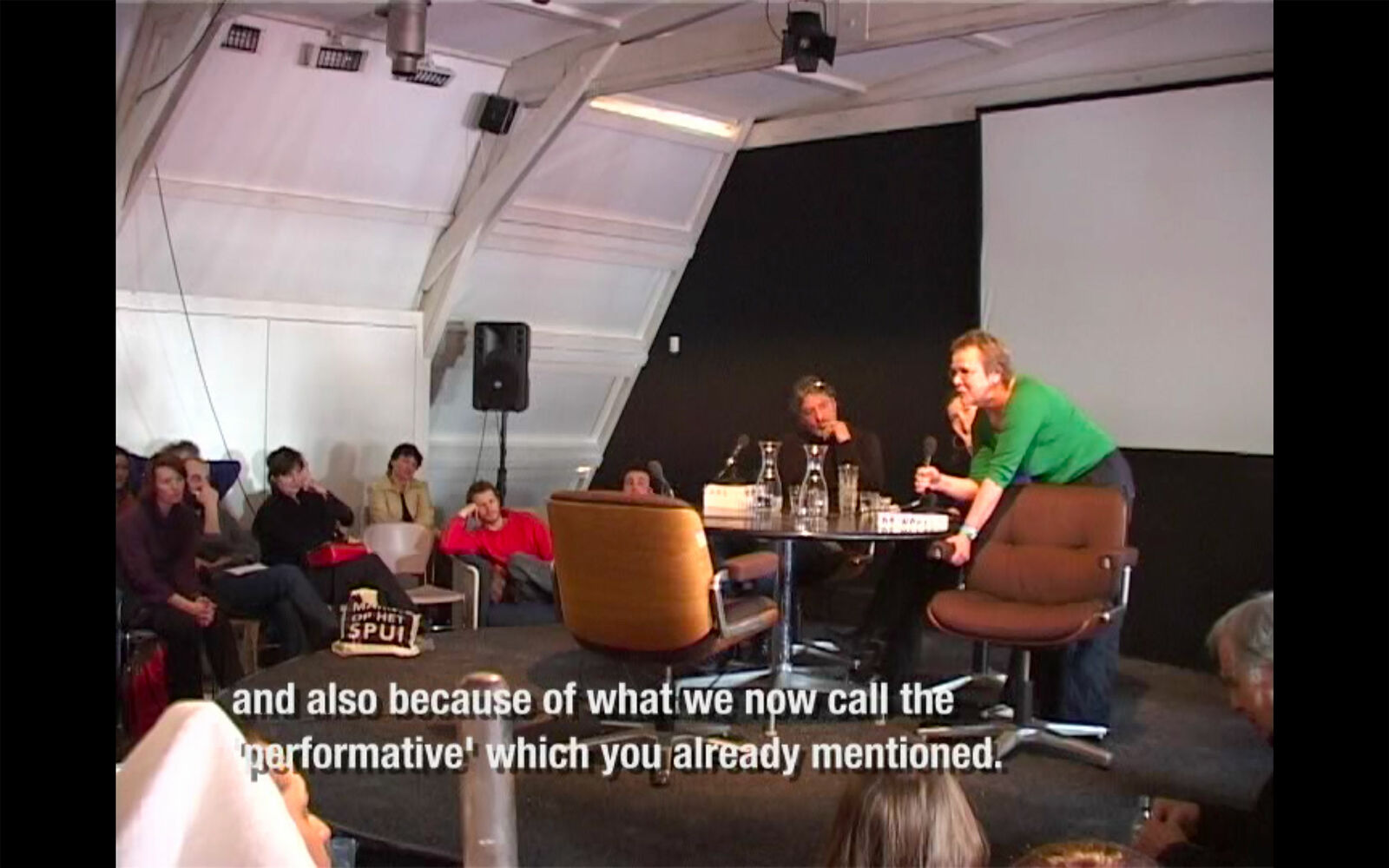
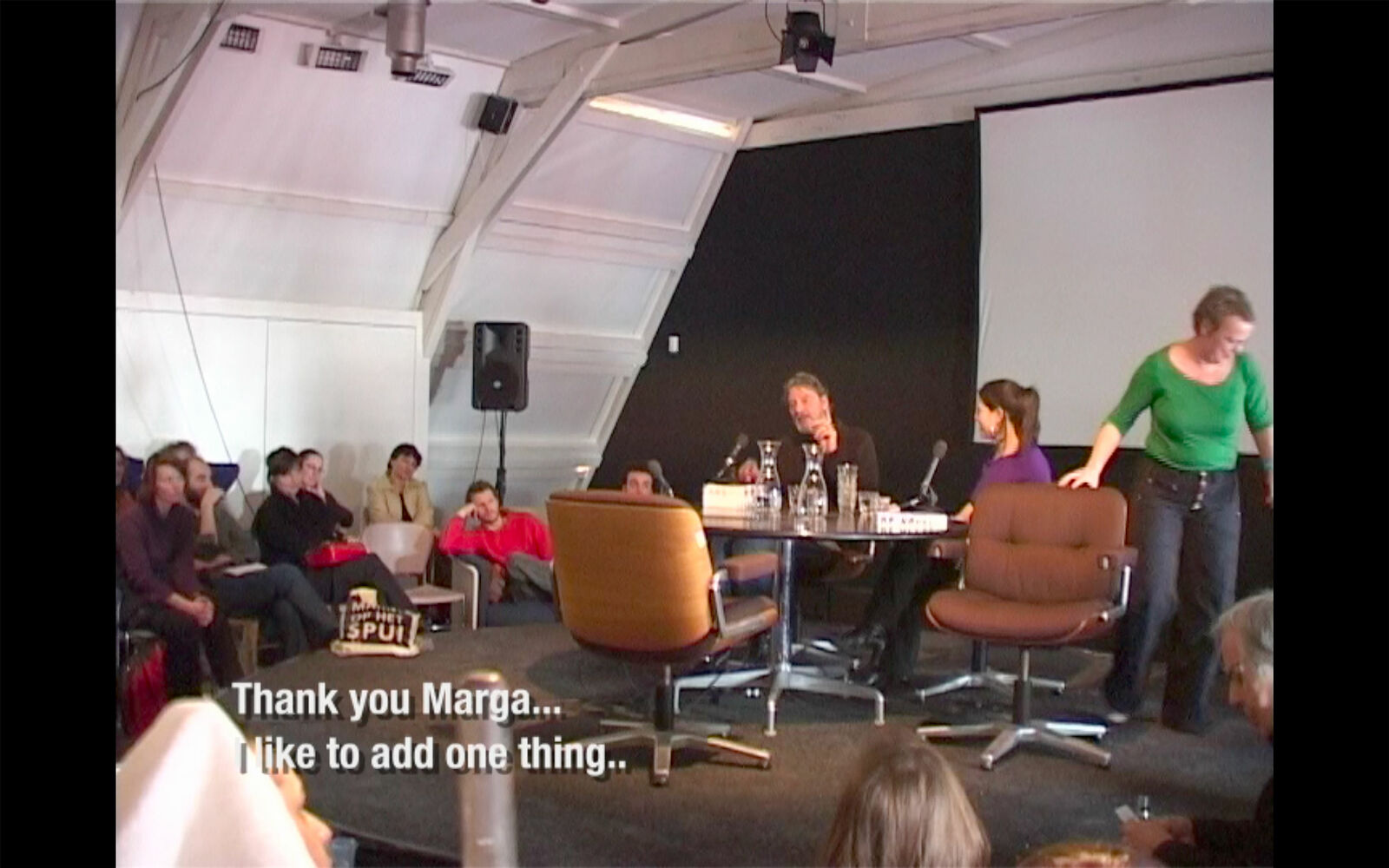

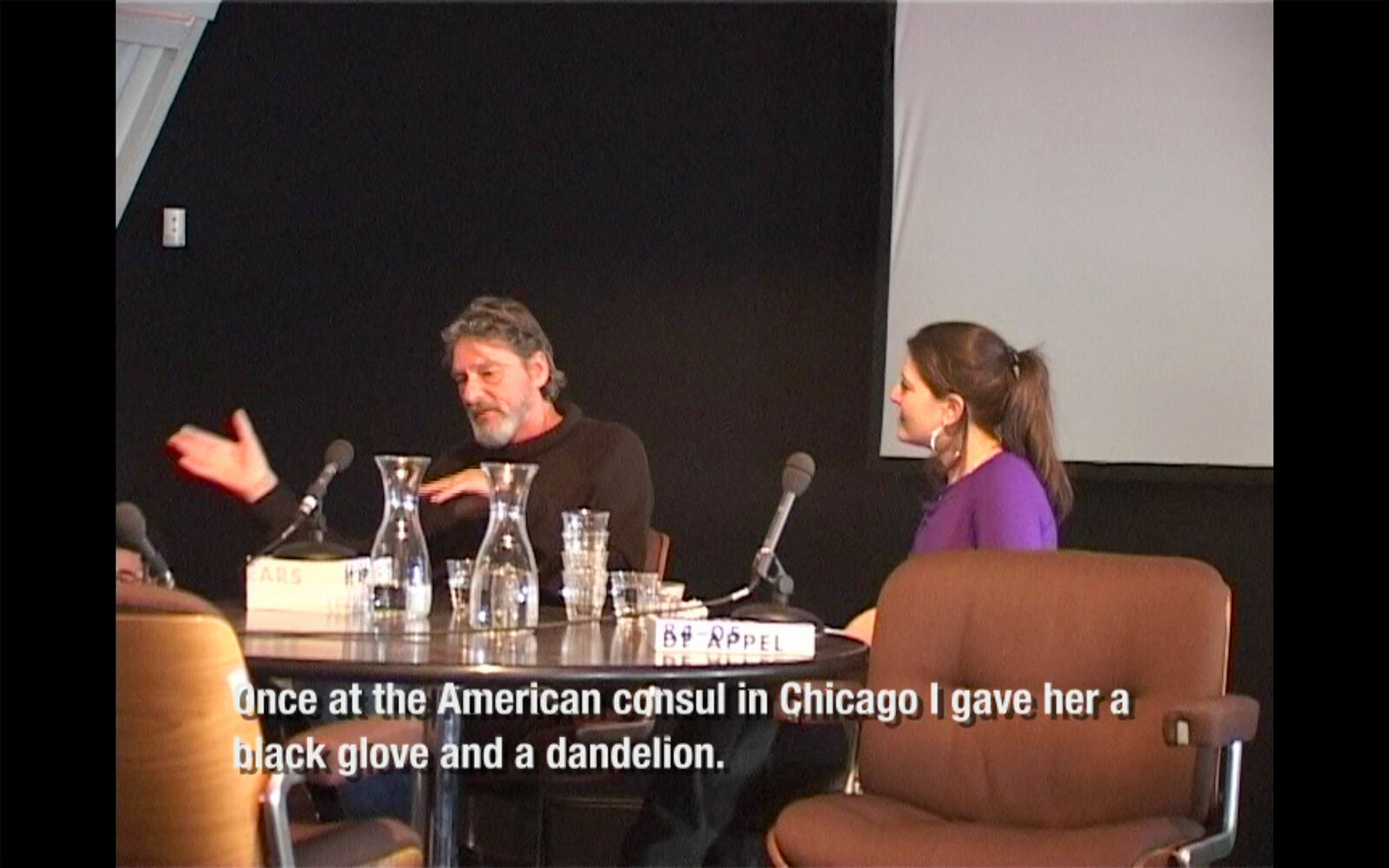
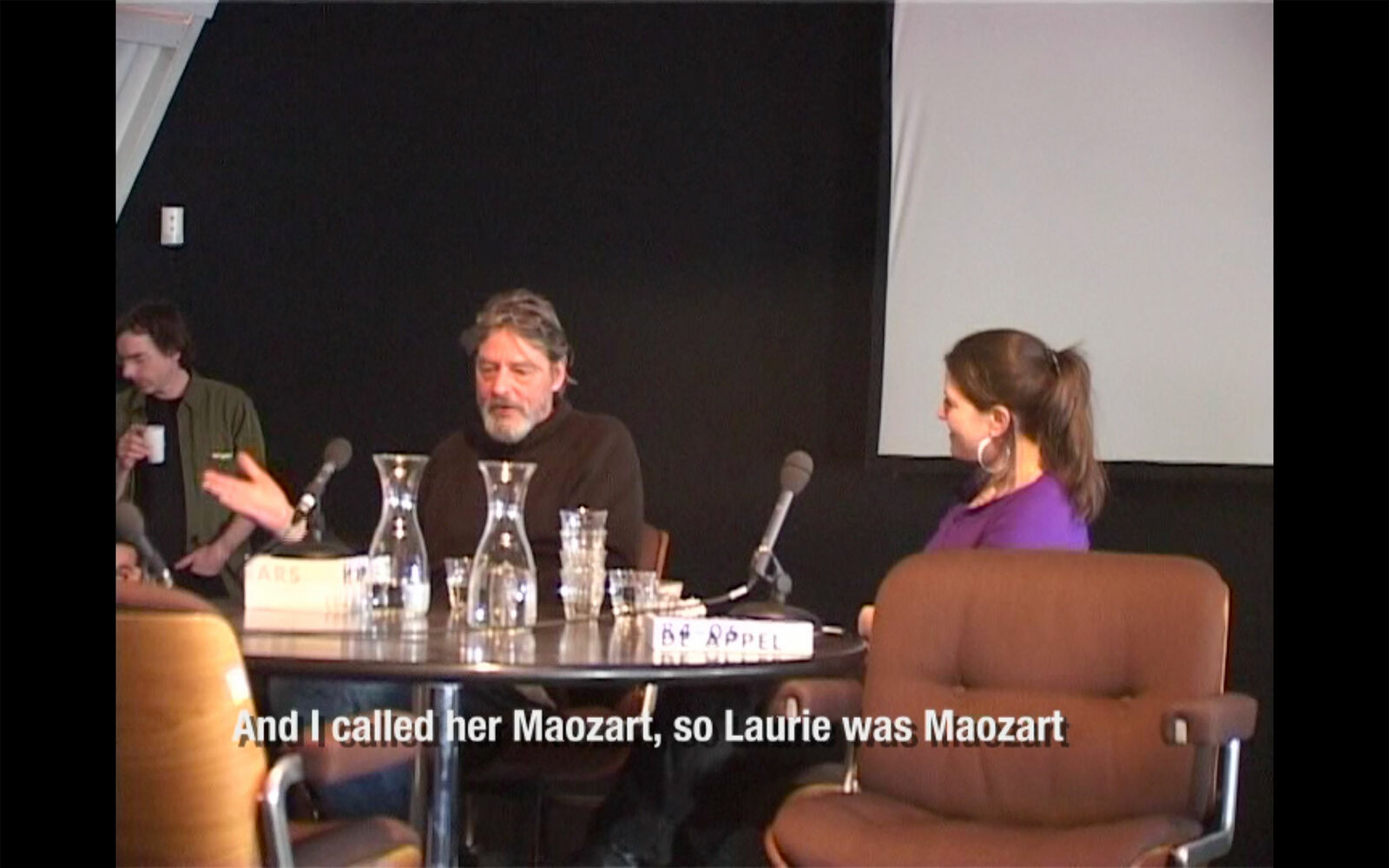

That was then, this is now 01.04.2006
Guests: Ulay, among many
Host: Danila Cahen, extra remarks: Marga van Mechelen
Location: de Appel, Nieuwe Spiegelstraat 10
Video stills, documentation of talk show event
31.03–01.04.2006
Videographer: Jasper van den Brink


